- Things to Do
- Food & Drink
- Shopping & Style
- Coca-Cola Foodmarks
- Restaurants & Cafes
- Music & Nightlife
- Neighborhoods
- Los Angeles


11 JR rail passes for foreign tourists visiting Japan
Tourists with foreign passports can explore Japan on a discount with these affordable train passes by JR

Travelling via train and shinkansen is a quintessential Japanese experience. However, train rides, especially on the shinkansen, can add up to be a costly expense – especially after the recent price hike . Lucikly for tourists, Japan Railways has created a host of discount rail passes exclusively for foreign passport holders with short-term visit visas, all of which offer unlimited rides on trains and shinkansen across multiple days. (Psst... some of these JR passes are also available to foreign residents in Japan – more info here .)
Aside from the popular Japan Rail Pass, which gives you access to most JR trains and shinkansen across the breadth of Japan, there are a number of other discount passes that could also save you a lot of money. To help you organise your travels, here's a list of all the current JR rail passes you can enjoy with your foreign passport as a temporary visitor in Japan. Just don't forget to bring your passport along with you when you go to purchase or collect your pass.
RECOMMENDED: The best JR rail passes for foreign residents in Japan
Japan Rail Pass
How much: 7-day ¥50,000 (children ¥25,000) ; 14-day ¥80,000 (¥40,000) ; 21-day ¥100,000 (¥50,000)
What it includes: A joint offering by all six JR companies in the country, the Japan Rail Pass is the ultimate pass to rule them all as it can be used for unlimited rides on almost all JR trains and shinkansen across the country from the north of Hokkaido to the south of Kyushu. The pass is available for seven, 14 or 21 consecutive days and is exclusively offered to foreign tourists from abroad who are visiting Japan as a temporary visitor. More information on the pass here .
Where you can travel with the pass: As this pass can be used all over Japan, the possibilities are endless. To make the most of your time in Japan, you could travel all the way from Kyushu to Hokkaido, while stopping at other popular destinations in between, including Hiroshima, Kyoto, Mt Fuji, Tokyo and Aomori.
JR Tokyo Wide Pass
How much: ¥15,000 (children ¥7,500)
What it includes: Three consecutive days of unlimited rides on shinkansen and limited express trains in the Kanto region. You can even hop on selected Joyful Trains (novelty and sightseeing trains) such as the steam locomotive SL Gunma . For details on lines covered by the pass, visit here . Where you can travel with the pass: Head north to Nikko, Utsunomiya or the picturesque Hitachi Seaside Park in Ibaraki. For views of Mt Fuji, you can head inland to Lake Kawaguchiko in Yamanashi. You can also hit the ski slopes at Gala Yuzawa in Niigata, go hot spring bathing in Gunma’s Kusatsu Onsen town or travel down the Izu Peninsula in Shizuoka for a beachside getaway.
JR East Nagano Niigata Area Pass
How much: ¥27,000 (children ¥13,500)
What it includes: Five consecutive days of unlimited travel on trains, shinkansen and JR buses across Nagano and Niigata prefectures. For details on lines covered by the pass, visit here .
Where you can travel with the pass: This pass will get you to the top destinations in Nagano and Niigata prefectures including Matsumoto, Karuizawa and Tokamachi. You’ll also be able to visit popular ski resorts like Hakuba, Echigo-Yuzawa and Gala Yuzawa.
JR East Tohoku Area Pass
How much: ¥30,000 (children ¥15,000)
What it includes: Unlimited rides for five consecutive days on local, rapid and limited express trains as well as shinkansen across the Tohoku region. Selected JR East bus services and Joyful Trains (including the Pokémon with You train ) are also included in the pass. For details on lines covered by the pass, visit here .
Where you can travel with the pass: It allows for travel within Greater Tokyo and the Tohoku region: Kanagawa, Chiba, Saitama, Gunma, Tochigi, Ibaraki, Miyagi, Fukushima, Yamagata, Akita, Iwate and Aomori prefectures.
JR West Kansai Wide Area Excursion Pass
How much: ¥12,000 (children ¥6,000)
What it includes: Three consecutive days of unlimited rides including shinkansen and limited express trains in the Kansai region. The pass is valid for shinkansen trips between Shin-Osaka and Okayama, plus the JR West lines across Kansai as well as the Chizu Express. It can also be used on local JR West buses and the adorable pink Hello Kitty shinkansen that runs on the Kodama line from Shin-Osaka. More information here .
Where you can travel with the pass: Explore Western Japan including Osaka, Kyoto, Nara, Hyogo, Wakayama, Kobe and more.
JR Kyushu Rail Pass
How much: 3-day ¥20,000 (children ¥10,000); 5-day ¥22,500 (¥11,250); 7-day ¥25,000 (¥12,500)
What it includes: The All Kyushu Area Pass includes unlimited rides on limited express and local trains across Kyushu as well as selected shinkansen between Hakata and Kagoshima or Nagasaki.
If you’re only concentrating on certain parts of Kyushu, consider the Northern Kyushu Area Pass (¥12,000 for three days) or the Southern Kyushu Area Pass (¥10,000 for three days). There’s also the Fukuoka Wide Pass (¥3,060 for two days) if you're only exploring the main tourist spots around Fukuoka prefecture. More details here .
Where you can travel with the pass: The All Kyushu Area Pass can be used throughout Kyushu island including the hot spring capital of Beppu, foodie destination Fukuoka and the lush nature attractions around Kagoshima. The Northern Kyushu Area Pass gives you access from Fukuoka to Nagasaki, Hita and Beppu while the Southern Kyushu Area Pass will get you from Kagoshima to Ibusuki, Aoshima and Obi.
Takayama-Hokuriku Area Tourist Pass
How much: ¥19,800 (children ¥9,900)
What it includes: Five consecutive days of unlimited travel on JR local, limited express trains, buses and the Hokuriku shinkansen from Osaka and Nagoya towards Shirakawa-go and Gokayama. More details here .
Where you can travel with the pass: Visit the World Heritage sites in Shirakawa-go and Gokayama, which are famed for their gassho-zukuri houses with steep, thatched roofs. You can also get to Kanazawa via the Nohi or Hokutetsu Bus from Toyama.
Ise-Kumano-Wakayama Area Tourist Pass
How much: ¥16,500 (children ¥8,250)
What it includes: Five consecutive days of unlimited travel on JR local, limited express trains, private railways and buses around Wakayama, Mie and Nara. More info here .
Where you can travel with the pass: Travel from Osaka or Nagoya to the World Heritage site of Kumano Kodo in Wakayama. The route also covers the popular onsen and beachtown Shirahama and the gorgeous Ise Jingu Shrine in Mie prefecture.
Mt. Fuji-Shizuoka Area Tourist Pass Mini
How much: ¥6,500 (children ¥3,250)
What it includes: Three days of unlimited rides on JR Local trains, buses, private railways and even a ferry around Shizuoka and Hamamatsu, including the Mt Fuji area. More info here .
Where you can travel with the pass: Besides visiting Mt Fuji, you can tour the popular hot springs around Shizuoka and Hamamatsu, including Atami, Kanzanji Onsen and Shimobe Onsen. Prefer to do a bit of shopping? Check out the Gotemba Premium Outlets , which also offers an amazing view of Mt Fuji.
Sapporo-Noboribetsu Area Pass
How much: ¥9,000 (children ¥4,500)
What it includes: Four consecutive days of unlimited rides between Sapporo New Chitose Airport, Sapporo, Otaru and Noboribetsu. However, it does not cover the JR Hokkaido buses, the streetcars or the Sapporo subway lines. More details here .
Where you can travel with the pass: Visit Sapporo, the capital of Hokkaido, as well as the retro harbour town of Otaru and the hot springs in Noboribetsu.
Sapporo-Furano Area Pass
How much: ¥10,000 (children ¥5,000)
What it includes: Four consecutive days of unlimited travel between Sapporo New Chitose Airport, Sapporo, Otaru, Furano, Biei and Ashikawa. However, it does not cover the JR Hokkaido buses, the streetcars or the Sapporo subway lines. More details here .
Where you can travel with the pass: See more of Hokkaido with this travel pass, which includes access to the famous farmlands and flower fields of Furano and Biei, as well as Sapporo, Otaru and Noboribetsu.
Explore more of Japan

Japan's 6 most underrated prefectures – and why you should visit
Travel off the beaten track to these storybook villages, Edo-era towns with geisha (not Kyoto!) and seaside retreats

12 most beautiful autumn destinations in Japan: from Kyoto to Aomori
Leaf Tokyo for these lakes, temples and forests, where you'll find some of Japan's most spectacular autumn foliage

9 most beautiful winter destinations in Japan
From snowy mountains to a white onsen town, there are plenty of places to make the most of the chilly season
[image] [title]
Discover Time Out original video
By entering your email address you agree to our Terms of Use and Privacy Policy and consent to receive emails from Time Out about news, events, offers and partner promotions.
🙌 Awesome, you're subscribed!
Thanks for subscribing! Look out for your first newsletter in your inbox soon!
- Terms of use
- Work for Time Out
- Time Out Group
- Advertising
- Modern slavery statement
- Manage cookies
Time Out Tokyo
- Magazine subscription
- Digital edition
- Buy the guide to Tokyo
Time Out products
- Time Out Worldwide

Welcome to Tokyo Metro
Frequently Seen
- Fare/Transfer Search
Access from the Airport
Tokyo Subway Ticket
Airport - Downtown Tokyo Routes and Tickets
Tips for Using Tokyo Metro
Route/Station Information
See Tokyo with Tokyo Metro
- Handy Safety Guide

Recommendations

Ultimate Guide to Tokyo Trains
By The Japan Switch Team | December 4th, 2023
When planning your Japanese trip, one of the aspects you simply can’t forget about is transportation. The transportation system, particularly trains in Tokyo (and across the entire country), can appear quite complicated to a first-time tourist. And rather than waste valuable moments in your holiday trying to figure out how to get around, it’s best to arrive prepared. That’s why we’ve compiled this extra-thorough, Ultimate Guide to Tokyo Trains. We’ll talk about reaching the major tourist attractions, what kind of travel pass you need, and much more in the article below.
As we’ve seen in previous articles, it’s also paramount that you make a travel itinerary before you go. Tokyo is an exciting, attraction-packed city, so figuring out which are unmissable stops for you will save you a lot of time. It will also make this guide that much easier to navigate, and help you create your ideal Tokyo road map.
This article is a part of our extensive series on Learning about Japan through Online Japanese Lessons at Japan Switch.
From Beginner to Pro
Our bi-weekly emails for beginners to low intermediate students will give you the tips and motivation to self-study Japanese your way to Japanese fluency.
Tokyo Trains - A Quick Overview
One of the many globally renowned elements of Japan is undoubtedly its transportation system. We’ve all seen the videos of train staff stuffing desperate passengers into crammed carriages, have we not? That aside, Japan has got one of the most well-organized and convenient transportation systems in the world, although it can appear daunting to a first-time visitor.
Whereas other capitals of the world struggle with easy access to its many areas, Tokyo has got pretty much everything covered. However, due to the city's sheer size, its train map looks like a wiry, multicolored mess at first glance. But do not despair. Once you pick up some basics, you’ll be good to go!
With roughly 300 subway and train stations spread out across the city, you’re going to be able to arrive easily at any and every destination on your itinerary. While it can’t exactly qualify as a “walkable city”, being so large, Tokyo is definitely one of the best places to visit – not only can you get by without a car, but the elaborate train system will mean you don’t even miss your wheels!
Another important benefit of Tokyo trains is that they are precise, usually running right on schedule; there’s even a rumor that Japanese people waiting for trains will be annoyed by a delay of even a few seconds. The trains themselves are also quite silent, clean, and most importantly, safe.
Tokyo Train Services To Familiarize Yourself With
While Tokyo transport is highly accessible and convenient, it can appear quite confusing to visitors at first, since different train lines are run by different companies. In the interest of convenience and ease of use, these companies work together pretty tightly to ensure a smooth passenger experience.
Most of the time, you can switch from one transport service to another without exiting the gates or purchasing an extra ticket. Although, depending on your chosen route, you may occasionally need to do that, as well.
Pro Tip: Know that Tokyo’s complex train and subway system is divided by a color scheme! It might be helpful to familiarize yourself with which line has which color assigned to it. Aside from that, you will also want to know the logos of each of the major train/subway providers when traveling through Tokyo.
#SIGHTSEEING
Don't miss our Ultimate Guide to Sightseeing in Japan to make sure you're hitting the best spots around!
Know Your Tokyo Trains.
When trying to understand the Tokyo transportation system, it is paramount that you familiarize yourself with the different types of trains. Tokyo boasts four separate train types:
- The local / slow train is one that stops at every single station along its route, which offers access to smaller, less known stations, but means a longer journey time.
- The rapid train skips some smaller stations along the route (so make sure you don’t miss yours!), but uses the same prices and platforms as the local train.
- The express train skips even more stations than the rapid, but as the name suggests, is very fast. Ideal if you’re wanting to travel between Tokyo’s major subway stations.
- The limited express train, finally, only stops at the major stations, and usually warrant an additional fee.
Pro Tip: Generally, the extra fee of limited express trains isn’t worth it if you're only travelling a short distance as you can travel quickly and easily between major areas on either the rapid or express trains.
Learn Japanese. Make friends. Enjoy Japan.
Save up to 30 - 60% on your Japanese lessons while learning online or in the heart of Tokyo with Japan Switch!
Japan Rail (JR) - The Mother of All Tokyo Trains
Japan Rail is the country’s number one rail provider. Its extensive rail network connects all the major cities of Japan and directs the famous Shinkansen bullet trains. Remember – if you are planning on traveling throughout the country as well, really look into these bullet trains. While they tend to be pricier than the average train ticket, they will save you a lot of time. And since Japan is quite a large country, you can easily waste an entire day of your visit just sitting on a regular train, getting from one city to another.
Japan Rail also runs an impressive 36 lines through the capital city alone, connecting many of the various neighborhoods of Tokyo. These are all run by JR East, the division of Japan Rail handling the busy Kanto and Tohoku Regions).
Possibly the most important Tokyo train line run by JR to be aware of is the JR Yamanote Line ( 山手線 ). This line actually runs in a loop around the city, connecting many of the city’s key tourist and business areas like Shinjuku, Shinagawa, Shibuya, Ueno, and many more. Familiarizing yourself with the Yamanote route is also helpful since everything that falls inside it is considered “Central Tokyo”. It’s likely that a lot of the attractions you want to explore will fall within the Yamanote line.
Running inside Central Tokyo and connecting all these major areas, the Yamanote Line can get quite busy, servicing locals and tourists alike, so the trains might be more crowded, and you may need to wait longer. Keep that in mind while planning your visit.
#SIGHTSEEING NEAR TOKYO
Short on time? Our Ultimate Guide to Planning a Day Trip from Tokyo has you covered!
Useful JR Lines
Aside from the Yamanote Line, here are some of the other major Japan Rail lines running through Tokyo.
The Keihin-Tohoku Line (京浜東北線) similarly services the central area of Tokyo. While the Yamanote Line runs in a circular loop around the city center, the Keihin-Tohoku Line only covers the eastern half of that circle, between Tabata and Shinagawa. It connects major stations like Kanagawa, Saitama, Saitama City, and Kawasaki, and is marked in light blue/cyan .
The Chuo / Sobu Line (中央線) is a local slow train line that runs across the Yamanote route. Being a slow line, the Sobu train stops at every station between Shinjuku and Ochanomizu and is marked with yellow .
The rapid Chuo Line (中央線) is the Sobu Line’s twin, with one notable exception. Where the Sobu Line is slow and stops at every train station, the rapid Chuo Line only stops at the major stations – Shinjuku, Yotsuya, Ochanomizu, Kanda, and Tokyo. It connects Tokyo Station with Shinjuku and is marked with orange .
The Saikyo Line (埼京線) also runs on the Yamanote route, this time only covering the western half of the circle. The train goes from Osaki Station towards Odaiba, connecting the southern Saitama Prefecture with central stations like Shinjuku. It is marked with deep green .
The Shinkansen bullet train (新幹線) that connects Tokyo to other major cities in Japan is marked in red .
Finally, Japan Rail is also responsible for Tokyo’s well-known Monorail , which connects the Haneda Airport to busy, central areas like Shinagawa, Minato, Ota, and so on.
While JR is responsible for the train lines running through Tokyo, transportation is also provided by the city’s two subway services, Tokyo Metro and Toei Subway.
Tokyo Metro (Subway)
Tokyo Metro, one of the city’s two subway providers, runs a total of 9 subway lines, connecting 23 of Tokyo’s most important wards. On top of connecting with Toei Subway lines, in some areas, Tokyo Metro also connects with Japan Rail lines, as well as other smaller private transport companies. Tokyo Metro’s network covers an impressive total of 195 km and connects 180 stations.
Every day, almost six million passengers ride the Tokyo Metro network, connecting central Tokyo with the city’s suburbs. As with the JR lines, it’s important to learn the different colors depicting different Tokyo Metro lines for ease of use.
Tokyo Metro offers both dedicated sightseeing routes, as well as more “regular” transport to Tokyo’s less touristy areas. Below, we will mark the popular tourist attractions along each line for ease of use.
Heads up: On top of being color-coded, the Tokyo Metro lines are also marked by a circled letter, symbolizing the name of the line. So, for instance, the Ginza Line will be marked by a circled “G”. Look for these if you get confused by the different color lines.
Learn Japanese for Free
Our newsletter for beginner to low intermediate Japanese students will get you on the right track to learning Japanese and saving money.
Tokyo Metro Train Lines + Sightseeing Spots!
The Ginza Line connects the wards of Chuo, Shibuya, Minato, Chiyoda, and Taito. Running across 14 km, it is considered the oldest subway line in the entirety of Asia (having opened in 1927). It is recommended for tourists, as it connects Ueno and Asakusa to shopping districts like Aoyama and Omotesando. It is marked in orange , and with a circled “G”.
Sightseeing: Meiji Shrine, Sanno Shrine, Ginza, Ueno Park, Senso-Ji Temple, and Omotesando Hills.
The Hibiya Line (東京メトロ日比谷線, Line 2) offers easy access to the city’s main fashion districts, such as Roppongi, Nakameguro, and Ueno. It runs from Nakameguro to Ueno, also covering important stops such as Ginza, or Hibiya. It’s colored silver and marked with an “H”.
Sightseeing: Hibiya Park, Imperial Palace, Tsukiji Market, Ameya Yokocho, Ueno Park.
The Marunochi Line (東京メトロ丸ノ内線, Line 4) actually splits into two lines: the original Marunochi Line, running from Ogikubo Station to Ikebukuro Station (covering 24 stations), and the Marunochi Branch Line, from Nakano-Sakaue to Honancho (covering 4 stations). It is marked by the color red , and the letter “M”.
Sightseeing: Shinjuku, Kabuki-Cho, Shinjuku Gyoen, Tokyo Dome, Imperial Palace, Tokyo Metropolitan Government.
The Tozai Line (東京メトロ東西線, Line 5) runs from Nakano to Nishi-Funabashi, and with roughly 1.6 million daily passengers is considered the busiest train line in Tokyo. It connects the eastern and western sides of Tokyo, stopping at important stations like Waseda, Kagurazaka, Kudanshita, and Kasai. Its color is sky blue , and its letter is “T”.
Sightseeing: Nakano Broadway, Imperial Palace, Tomioka Hachiman Shrine, Kagurazaka, Nippon Budokan.
The Chiyoda Line (東京メトロ千代田線, Line 9) runs from Yoyogi-Uehara to Kita-Ayase, spanning a total of 20 stations. It covers major stops like Meiji-jingumae, Omotesando, and Nezu, and is considered Tokyo’s second busiest subway line, with roughly 1.4 million daily passengers. It's marked with green , and the letter “C”.
Sightseeing: Yoyogi Park, Yushima Tenmangu, National Diet Building, Omotesando Hills, Imperial Palace, Meiji Shrine.
WORRIED ABOUT THE LANGUAGE BARRIER?
Check out our Guide to Japanese Language Exchange and make Japanese friends who speak English!
The Yurakucho Line (東京メトロ有楽町線, Line 8) covers a total of 24 stations from Wakoshi to Shin-Kiba. Its major stops include Ichigaya, Yurakucho, Sakuradamon, and Ginza Itchome. It’s marked with a brownish gold , and the letter “Y”.
Sightseeing: Ginza, Tsukishima, Monju Street, Yumenoshima Park, Sunshine City, Gokokuji.
The Namboku Line (東京メトロ南北線, Line 7) runs from Meguro to Akabane-Iwabuchi, mainly connecting luxury areas like Bunkyo and Roppongi to Korakuen and Tokyo University. It stops at places like Hanzomon, Otemachi, Kuidanshita, and Omotesando. It is marked emerald green , and with the letter “N”.
Sightseeing: Roppongi Hills, Hotel Gajoen Tokyo, Hie Shrine, Tokyo Dome, Rokugien.
The Hanzomon Line (東京メトロ半蔵門線, Line 11) spans an impressive 16.8 km in length, stretched over only 14 stations from Shinuya to Oshiage. Some of its major stops include Aoyama Itchome, Hanzomon, Kudanshita, and Suitengumae. It’s marked purple and with the letter “Z”.
Sightseeing: Shibuya 109, Tokyo Skytree, Harajuku, Omotesando, Nippon Budokan, Tokyo Station, and Imperial Palace.
The Fukutoshin Line (東京メトロ副都心線, Line 13) covers sixteen stations from Wakoshi to Shibuya, basically covering the same route as the Yurakucho Line from Wako to Ikebukuro. Its main stations include Zoshigaya, Nishi-Waseda, and Shinjuku Sanchome. Its color is brown , and its letter is “F”.
Sightseeing: Sunshine City, Shibuya 109, Meiji Shrine, Shinjuku Gyoen, and Omotesando Hills.
Toei Subway
If you’re finding it hard to arrive at your destination using the JR or Tokyo Metro lines, it may be time to switch to the Toei Subway. Compared to either of the first two, Toei Subway seems like the easier of the three major transportation providers. Toei runs only four subway lines across Tokyo, all touching base near major tourist attractions, and passing through all the sought-after wards and districts.
However, running only four lines, Toei trains tend to have slightly more stops than Metro lines.
The Asakusa Line (都営地下鉄浅草線, Line 1) spans a total of 20 stations from Nishi-Magome to Oshiage. It runs through some major stops like Nihonbashi, Higashi-Ginza, and Ningyocho. It is marked with a vivid rose color, and the letter “A”.
Sightseeing: Shiba Park, Zojo-ji, Hamarikyu Gardens, Tokyo Skytree, Senso-ji Temple, Kyu Shiba Rikyu Garden,
The Mita Line (都営地下鉄三田線, Line 6) covers 27 subway stations, connecting Meguro to Nishi-Takashimadaira. It offers convenient access to several tourist attractions and stops at some popular stations, including Shibakoen, Jimbocho, Suidobashi, and Kasuga. It is marked with a vivid blue color, and the letter “I”.
Sightseeing: Tokyo Metropolitan Teien Art Museum, Zojo-Ji, Tokyo Dome, Hakusan Shrine, Imperial Palace, Tokyo Station.
The Shinjuku Line (都営地下鉄新宿線, Line 10) takes you from the east of Shinjuku Station, across 20 stations, to Ichikawa in Chibo. It passes through Koto, Edogawa, as well as Akebonobashi, Kudanshita, and Iwamotocho. It’s colored in a light leaf green , and marked with an “S”.
Sightseeing: Shinjuku Kabukicho, Shinjuku Gyoen, Science Museum, Nippon Budokan, Akihabara.
The Oedo Line (都営地下鉄大江戸線, Line 12) is probably your best option for sightseeing. Spanning an impressive 38 stations, the Oedo Line passes through all the major, central tourist attraction points. It goes from Hikarigaoka to Tochomae, passing through Roppongi, Ryogoku, Aoyama Itchome, Tsukishima, and Ueno Okachimachi. It is marked with magenta , and the letter “E”.
Sightseeing: Tokyo Tower, Tsukiji Market, Tsukushima Monja Street, Edo-Tokyo Museum, Ameya Yokocho, Tokyo Skytree, Asakusa.
Other Tokyo Trains / Services
While Japan Rail, Tokyo Metro, and Toei Subway are the three main train and subway providers in Tokyo, they are far from the only ones. Other, smaller private companies like Keikyu Electric Railway, Keio Corporation, Odakyu Electric Railway, and the Tokyo Sakura Tram, also provide indispensable access to Japan’s capital.
However, as a first-time visitor, it’s more than enough to familiarize yourself with the three main providers outlined above, as they will take you to the majority of places you’re likely to need on your trip.
Here’s some bite-sized info about the other transport providers:
The Keikyu Electric Railway offers an easy connection between the Haneda Airport and the Shinagawa Station.
The Kei Corporation allows you to explore the beautiful and highly popular Mount Takao.
The Odakyu Electric Railway runs three lines out of Shinjuku Station, connecting to Odawara (great for exploring the Hakone area), Enoshima, and Tama New Town.
Finally, the Tokyo Sakura Tram is a charming retro street car service that runs from Minowabashi Station to the Waseda Station, covering a total of about 12 km, and 30 stations.
Tokyo Trains: Tickets and Passes
Now that we’ve got a basic understanding of Tokyo’s many train providers, it’s time to talk about costs and ticket types. There are, of course, a variety of options for getting around Tokyo. While most stations offer multilingual desks and ticket machines, it may save time and money buying yours beforehand online!
Single Tickets
One of the easiest ways to travel by train through Tokyo is by purchasing single-use tickets for each trip, to take you from A to B. Typically, Tokyo Metro ticket prices range between 180 and 330 yen ($1.26 - $2.30), while Toei fare goes between 180 and 430 yen ($1.26 - $3).
Prepaid IC Cards (Travel Cards)
Prepaid cards are considered the most convenient choice for traveling Tokyo. These are sold at JR stations (known as Suica IC Cards ) and non-JR stations (known as Pasmo IC Cards ). Though the names differ, the use is basically identical.
IC Cards can be purchased for a refundable deposit of 500 yen ($3.50), and come pre-charged with JPY1,500 ($10.50). They can then be reloaded with more money at any IC Card redemption station/machine.
Prepaid cards are advantageous if you’re going to be traveling a lot, since you can just swipe them, and don’t need to stop and purchase a new ticket each time you want to hop on a train. Additionally, prepaid Suica Cards can be used to pay in other places such as vending machines.
IC Cards allow you to use any bus or train in Greater Tokyo (as well as numerous other major Japanese cities).
#COST-PERFORMANCE
Whether you're here for a few weeks or the long haul, don't miss our Ultimate Guide to Living in Tokyo (on a Budget) !
Tourist Passes for Tokyo Trains
Special subway tourist passes are available for periods of 24, 48, or even 72 hours, from Tokyo Metro Pass Offices, and some Tourist Information desks in some stations. You can also purchase them online.
Tokyo Free Kippu (Tokyo Tour Ticket) allows you unrestricted use of all subway lines (both Metro and Toei) across Tokyo for one full day, as well as JR Trains (in the central Tokyo area).
Cost: 1,600 yen ($11)
Tokyo Subway Ticket is sold at ticket offices at Narita and Haneda Airports, as well as in major subway stations, and Bic Camera and Yamada Denki stores. It offers unlimited subway access (both Toei and Metro), though doesn’t work on JR trains.
24 hours - 800 yen ($5.50)
48 hours - 1,200 yen ($8.3)
72 hours - 1,500 yen ($10.50)
Tokyo Metro 24-Hour Ticket allows you unlimited use of all Tokyo Metro lines (though doesn’t work on JR or Toei subway lines) for one day. It can be purchased in any Tokyo Metro station.
Cost: 600 yen ($4.18)
Toei One-Day Pass (Toei Marugoto Kippu) similarly allows you unlimited use of all four Toei subway lines, as well as overground buses and streetcars for 24 hours. It can be bought at any Toei station and is not available on either Metro or JR.
Cost: 700 yen ($4.88)
Toei and Tokyo Metro One-Day Economy Pass combines the above two, offering unlimited access on all thirteen subway lines (both Metro and Toei) for one calendar day. It is not valid on JR trains and can be bought at any subway station in central Tokyo.
Cost: 900 yen ($6.28)
Your Japanese leaving people in the dark?
Let our newsletter for beginner to low intermediate learners guide your way.
Start Learning Today
Is a Day Pass Worth It?
If you’re planning a couple of days where you’ll be intensively using the Tokyo subway, it might be worthwhile investing in a day pass. If you’re looking at a longer stay with fewer daily trips, then a prepaid IC card is probably your best bet.
Tokyo Train Passes
Tokunai Pass allows you unlimited use of all JR trains in the central Tokyo area for one day, and can be purchased and ticket counters and vending machines in JR Stations.
Cost: 760 yen ($5.30)
Japan Rail Pass , finally, allows you full access on JR trains throughout Japan. It can be purchased over different time periods (7-, 14-, or 21-days). JR Passes can be regular, or green-car (first-class), which is obviously slightly pricier. You can use your JR Pass at JR-operated train lines in Tokyo, though not on lines from the other providers. You can also use it to ride the Tokyo Monorail, as well as obtain discounts at hotels and venues that are JR-affiliated.
7-days - 29,650 yen ($206) / 39,600 yen ($276) for Green Car 14-days - 47,250 yen ($329.50) / 64,120 yen ($447) for Green Car 21-days - 60,450 yen ($421) / 83,390 yen ($581) for Green Car
Heads up: The price of the Japan Rail Pass will be severely increased as of October 1st 2023, going up by a whopping 70%. So that the regular 7-day pass will go from 29,650 yen to 50,000 yen ($350); the 14-day one will go to 80,000 yen ($560), and the 21-day pass goes up to 100,000 yen ($700). Green Car prices will skyrocket to 70,000 - 140,000 yen ($490 - $980).
The pass can still be purchased at old prices until September 30th, and can theoretically be used for up to three months after purchase (so until early 2024).
While the increase in price makes the JR Pass much less convenient than before, it is still a good option for travelers interested in using the rail system heavily during their stay.
Be warned that regional rail tickets will also suffer a price increase, so a JR Pass might still be worth the investment for your trip!
Check out the Ultimate Guide to Annual Events in Tokyo and enjoy some of the biggest events the city has to offer!
Tokyo Trains : Wrap-Up
At the end of the day, which pass or which Tokyo train company you opt for or use more heavily will depend on your travel priorities. Hopefully, now, you have a better understanding of the complex subway and train system in the Japanese capital!
Related Articles: Ultimate Guide to Snow Monkey Onsen Ultimate Guide to Visiting Shrines in Tokyo Top 15 Tips to Make Japanese Friends Ultimate Guide to Amusement Parks in Tokyo Ultimate Guide to Tokyo at Night Our Favorite Things to Do in Yokohama
2 Ebooks to Jump Start your Japanese
Subscribe to our newsletter to get bi-weekly study tips, advice and stories on how YOU can improve your Japanese.
Related Posts
Guide to japanese customs, guide to japanese culture, guide to japanese omiyage.
- Media & Industry
- Meetings & Events
- Select Language 简体中文 繁體中文(香港) 繁體中文(臺灣) India (English) Bahasa Indonesia 한국어 ภาษาไทย Tiếng Việt Singapore (English) Philippines (English) Malaysia (English) Australia/New Zealand (English) Français Deutsch Italiano Español United Kingdom (English) Nordic countries(English) Canada (English) Canada (Français) United States (English) Mexico (español) Português العربية Japan(日本語) Global (English)
- India (English)
- Bahasa Indonesia
- Singapore (English)
- Philippines (English)
- Malaysia (English)
- Australia/New Zealand (English)
- United Kingdom (English)
- Nordic countries(English)
- Canada (English)
- Canada (Français)
- United States (English)
- Mexico (español)
- Global (English)
- Fujiyoshida
- Shimonoseki
- Ishigaki Island
- Miyako Island
- Kerama Island
- Tokyo Island
- Koka & Shigaraki
- Hida Takayama
- Ginza, Nihonbashi
- Beppu & Yufuin (Onsen)
- Ginzan Onsen
- Nagasaki Islands

- Kumano Kodo
- Shikoku Karst
- Amami Oshima
- Hachimantai
- Omihachiman
- Aizuwakamatsu

- Diving in Japan
- Skiing in Japan
- Seasonal Flowers in Japan
- Sustainable Outdoors
- Off the Beaten Track in Japan
- Scenic Spots
- World Heritage
- Home Stays & Farm Stays

- Japanese Gardens
- Japanese Crafts
- Temple Stays
- Heritage Stays
- Festivals and Events
- Theater in Japan
- Japanese Tea Ceremony
- Cultural Experiences in Japan
- Culture in Japan

- Local Cuisine Eastern Japan
- Local Cuisine Western Japan
- Local Street Food
- Japan's Local Ekiben
- Japanese Whisky
- Vegetarian and Vegan Guide
- Sushi in Japan Guide
- Japanese Sake Breweries

- Art Museums
- Architecture
- Performing Arts
- Art Festivals
- Japanese Anime and Comics
- Japanese Ceramics
- Local Crafts

- Scenic Night Views
- Natural Wonders
- Theme Parks
- Samurai & Ninja
- Iconic Architecture

- Wellness Travel in Japan
- Japanese Ryokan Guide
- A Guide to Stargazing in Japan
- Relaxation in Japan
- Forest Bathing (Shinrin-yoku)

- Experiences in Japan
- Enjoy my Japan
- National Parks
- Japan's Local Treasures
- Japan Heritage
- Snow Like No Other
- Wonder Around Japan

- Visa Information
- Getting to Japan
- Airport Access
- COVID-19: Practical Information for Traveling to Japan
- Anime Tourism
- Countryside Stays
- Accessible Tourism
- Hokkaido Great Outdoors
- Scenic World Heritage in Tohoku
- Shikoku’s Nature and Traditions
- Southern Kyushu by Rail

- Traveling by Rail
- How to Travel by Train and Bus
- JR Rail Passes
- Scenic Railways
- Renting a Car
- Sustainable Travel in Japan
- Travel Brochures
- Useful Apps
- Online Reservation Sites
- Eco-friendly Accommodation
- Luxury Accommodations
- Traveling With a Disability
- Hands-free Travel
- How to Book a Certified Tour Guide
- Volunteer Guides
- Tourist Information Center

- Japanese Manners
- Spring in Japan
- Summer in Japan
- Autumn in Japan
- Winter in Japan
- Cherry Blossom Forecast
- Autumn Leaves Forecast

- Japan Visitor Hotline
- Travel Insurance in Japan
- Japan Safe Travel Information
- Accessibility in Japan
- Vegetarian Guide
- Muslim Travelers
- Safety Tips

- JAPAN Monthly Web Magazine
- Arts & Cultures
- Nature & Outdoor
- Festivals & Events
- Insider Blog
- Things to do
- Local Guides
- Food & drink
- Traditional
- Hokuriku Shinetsu

My Favorites
${v.desc | trunc(25)}
Planning a Trip to Japan?
Share your travel photos with us by hashtagging your images with #visitjapanjp
GUIDE Japan Rail Pass The JR Pass, a convenient and affordable way to travel Japan by train
- Stories & Guides
- Japan Rail Pass
Make the most of your trip to Japan with a JR Pass
The Japan Rail (JR) Pass is a deal offered exclusively to foreign visitors traveling in Japan under temporary visitor status. It allows you to pretty much take unlimited rides on the JR network throughout Japan. Since the JR Pass was first created, the shinkansen (bullet train) network has greatly expanded, and now it's possible to ride the shinkansen all the way from Hokkaido to Kyushu.
From October 1st, 2023, a regular seven-day adult pass costs 50,000 yen, while those looking for a little more luxury can buy a Green Car (first class) pass from 70,000 yen. The 14-day regular adult pass is 80,000 yen, while the regular 21-day pass costs 100,000 yen.
Kids' passes are reduced by 50 percent for children aged between 6 and 11.

The shinkansen is one of the fastest, most convenient ways to get around Japan
What is covered?
Outside urban centers such as Tokyo and Osaka, the pass is best used to cover distance, as it does not include municipal subways and private suburban lines. With thousands of kilometers of track, the JR network connects you to attractions across Hokkaido, Honshu, Shikoku and Kyushu, the four main islands of Japan.
The pass allows you to ride many local buses operated by JR as well, including the tourist loop bus in Hiroshima, JR Hokkaido buses around Sapporo, and the local bus to Kusatsu Onsen. You can even ride the JR West Miyajima ferry, which operates from Miyajimaguchi, Hatsukaichi, Hiroshima and Miyajima.
NOTICE: Miyajima Visitor Tax
- From October 2023, visitors to Miyajima will be required to pay the Miyajima Visitor Tax. Please show your JR Pass at the service window of the JR West Miyajima Ferry and then pay the Miyajima Visitor Tax separately. https://another1000years-miyajima.jp/en/visitortax/index.html
The Japan Rail Pass makes plenty of famous attractions accessible, allows for easy and convenient travel across the country, and can save you money on your travels. Aside from discounted travel, some tourist facilities also offer special discounts or other benefits when you show your JR Pass.

What isn't covered?
There are some important exceptions you should know before deciding to buy a pass or not. For instance, the JR pass does not include rides on the Nozomi (the fastest service on the Tokaido-Sanyo Shinkansen route) or Mizuho trains (fastest on the Sanyo-Kyushu Shinkansen route). If you're traveling on these lines, be careful which trains you board, as passengers who ride the Nozomi and Mizuho with a JR Pass will have to buy an additional ticket before boarding. However, purchasing these additional tickets includes added benefits, like being able to ride from Tokyo to Hiroshima without changing trains, for example.
In cities like Tokyo, the pass doesn't give you access to the subway and metro lines, so you might find it a little inconvenient if you will spend most of your time in one major urban area. Many of the major attractions have JR stations nearby, but if you find a quicker or more convenient route on the subway, you will have to pay extra. Using a pre-paid IC travel card, though, is a convenient way to make use of both private railways and JR lines. However, some suburban "liner" express trains on the JR network, aren't included either, and passengers need a special separate ticket to board them.

It's also important to note that Japanese railroad networks can be extremely complex, so sometimes JR trains will also use private railway tracks. In these cases (as well as those involving JR express buses), additional fees may apply.
How do I get a JR Pass?
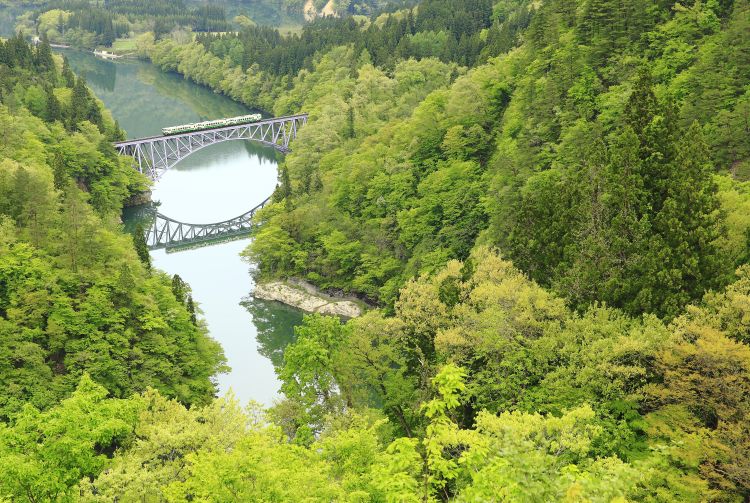
How do I use it?
When you arrive to Japan, you can pick up your pass or exchange your voucher at a designated pickup location. Make sure to have your passport, temporary visitor stamp or sticker and your exchange order or reservation number ready before you arrive at the counter to ensure a smooth exchange. Once you receive your JR Pass, you can start using the trains. The JR Pass itself is your ticket, and you can sit in any of the available seats of the non-reserved seat cars except when you reserve a seat, in which case you are issued a seat ticket.
You can make reservations on most shinkansen and other long-distance travel (like limited express trains) for no extra cost with your JR Pass. Making seat reservations is a good idea, especially if you're traveling during peak times and seasons, or riding the first or last trains of the day.
Some trains, including the fastest shinkansen like the Hayabusa (Tohoku Shinkansen), and Kagayaki (Hokuriku Shinkansen), certain limited express trains and some popular sightseeing trains don't offer non-reserved seats, so seat reservations are mandatory. Seat selection is generally not available on local and urban trains, but some quick web research will help you to confirm.
JR Pass holders can now use the automatic gates at stations when available, and if you have additional tickets you can stack them and feed them into the machine at once.
Travel tip: if traveling in the direction of Kyoto and Osaka from Tokyo on the shinkansen, reserve a window seat on the right for a view of Mt. Fuji.
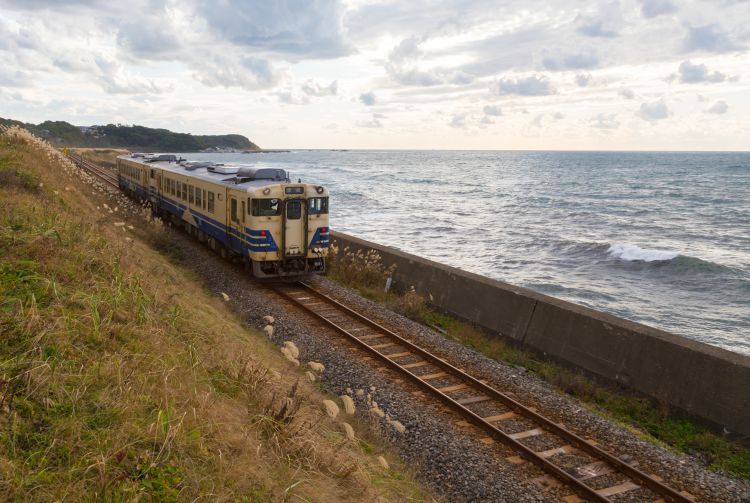
So, should I buy it?
If you're hoping to cover a lot of ground, want to use the shinkansen for day trips, or even if you'd prefer to avoid air travel, toll roads, highways, and long-distance buses, the JR Pass might be a good investment. However, if you choose to spend most of your time exploring Tokyo or Osaka, it may be wise to look into subway passes, or area rail passes.
The potential disadvantage to owning a JR Pass might be trying to squeeze too much into your itinerary to maximize your discount or, the opposite: buying a pass and not using it to its full potential. Both of these scenarios can be avoided with a little planning.

Even rural spots are within reach
JR Pass alternatives
Regional JR passes offer unlimited rides in specific areas. If you plan to travel extensively through Western Japan (Kyoto, Osaka, Hiroshima, etc.), consider JR-West Rail Passes. If you'd like to focus your travel on the eastern parts (Tokyo, Nagano, Niigata, and Tohoku), look into the JR East Pass.
The latest information may differ, so please check the official website.
* The information on this page may be subject to change due to COVID-19.
- Bullet Train
- Travel Information
- Travel Deals
- Travel Passes
- Travel Tips
Did this information help you?
out of found this information helpful.
Thank you for your feedback.
Recommended for you.
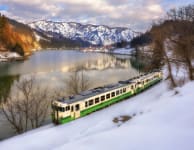
Please Choose Your Language
Browse the JNTO site in one of multiple languages
test20230315

Admission to over 50 popular cultural facilities from art museums to aquariums!
Enjoy ticketless admission to over 50 popular cultural facilities representing Japan to your heart’s content! THE TOKYO PASS is a smart pass service that allows you to enjoy cultural tourism in Tokyo to the fullest!
Choose the perfect pass for the length of your stay!
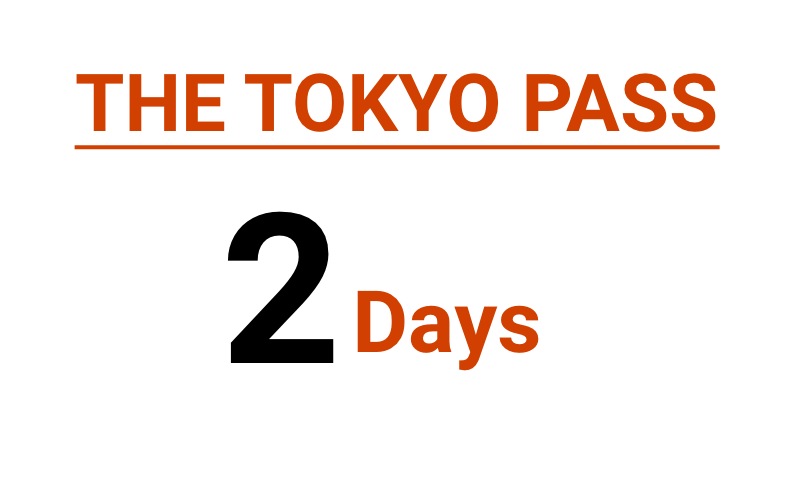
+ Tokyo Subway 48-hour ticket (¥1,200)
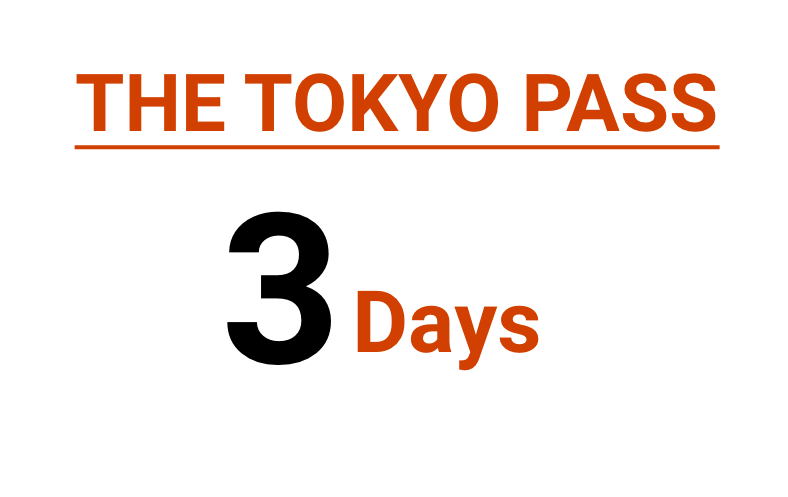
+Tokyo Subway 72-hour ticket (¥1,500)
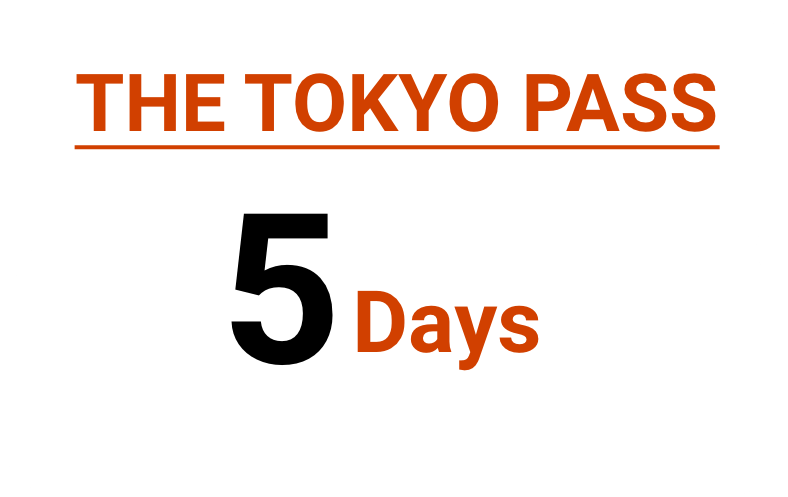
+ Tokyo Subway 48-hour ticket & 72-hour ticket (¥2,700)
Enjoy a luxurious cultural tour with the TOKYO PASS!
THE TOKYO PASS allows you to enjoy Tokyo’s popular cultural facilities in luxury. Let your interests take you around Tokyo!

Why use THE TOKYO PASS?
THE TOKYO PASS allows you to make payments and enter attractions with your smartphone. Having admission slots for THE TOKYO PASS per hour, you can enjoy safe and affordable cultural experiences to avoid unnecessary contact with others and congestion.
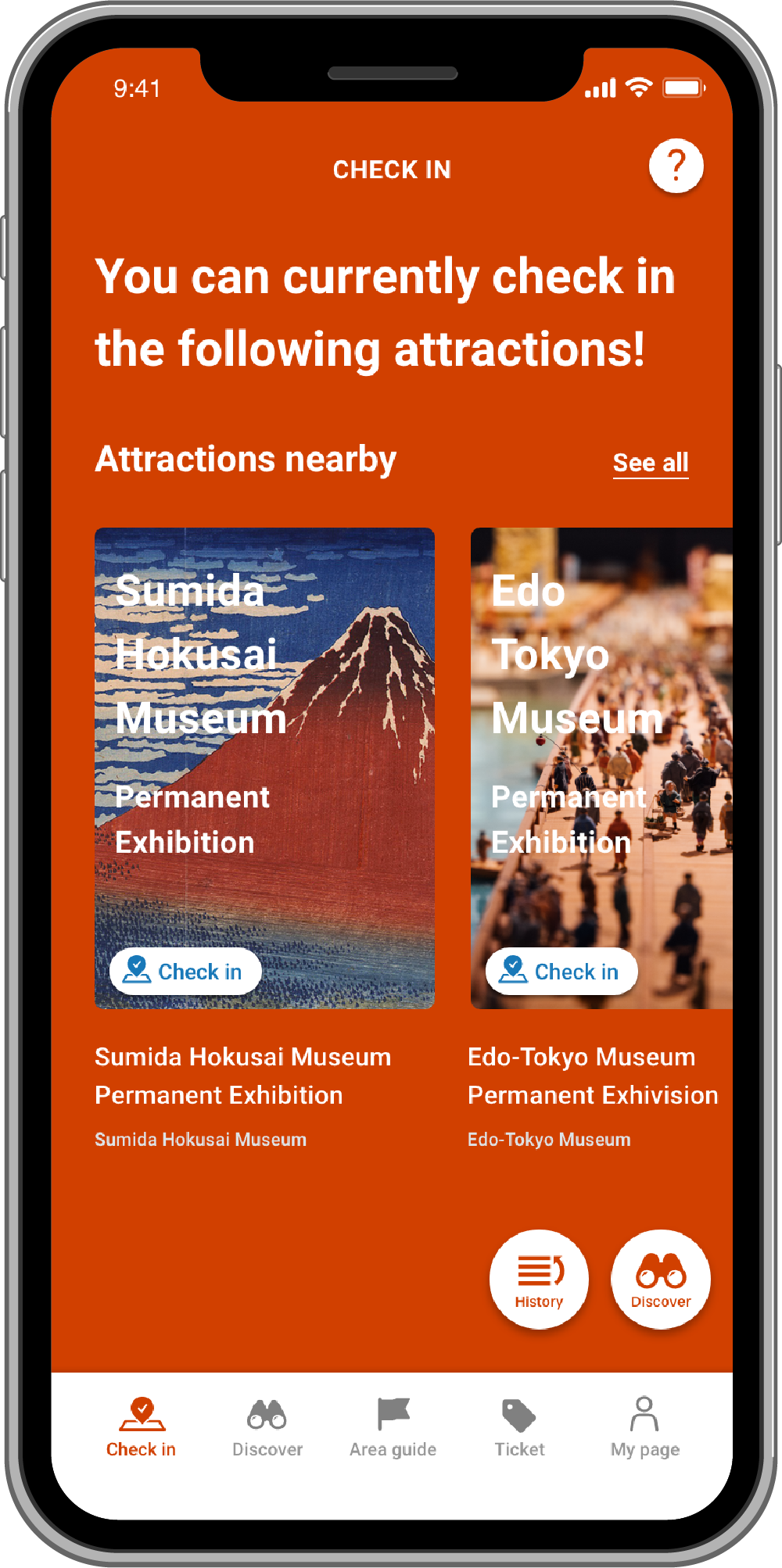
An entry pass for unlimited admission! Enjoy over 50 popular cultural facilities to the fullest
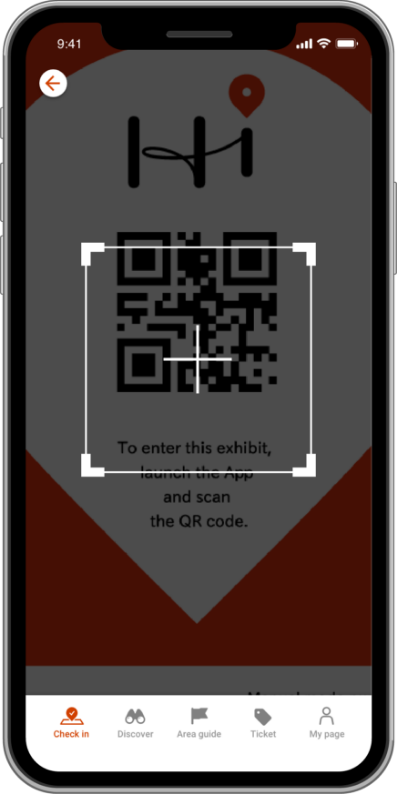
Use a QR Code to enter! Ticketless and cashless with advance payment
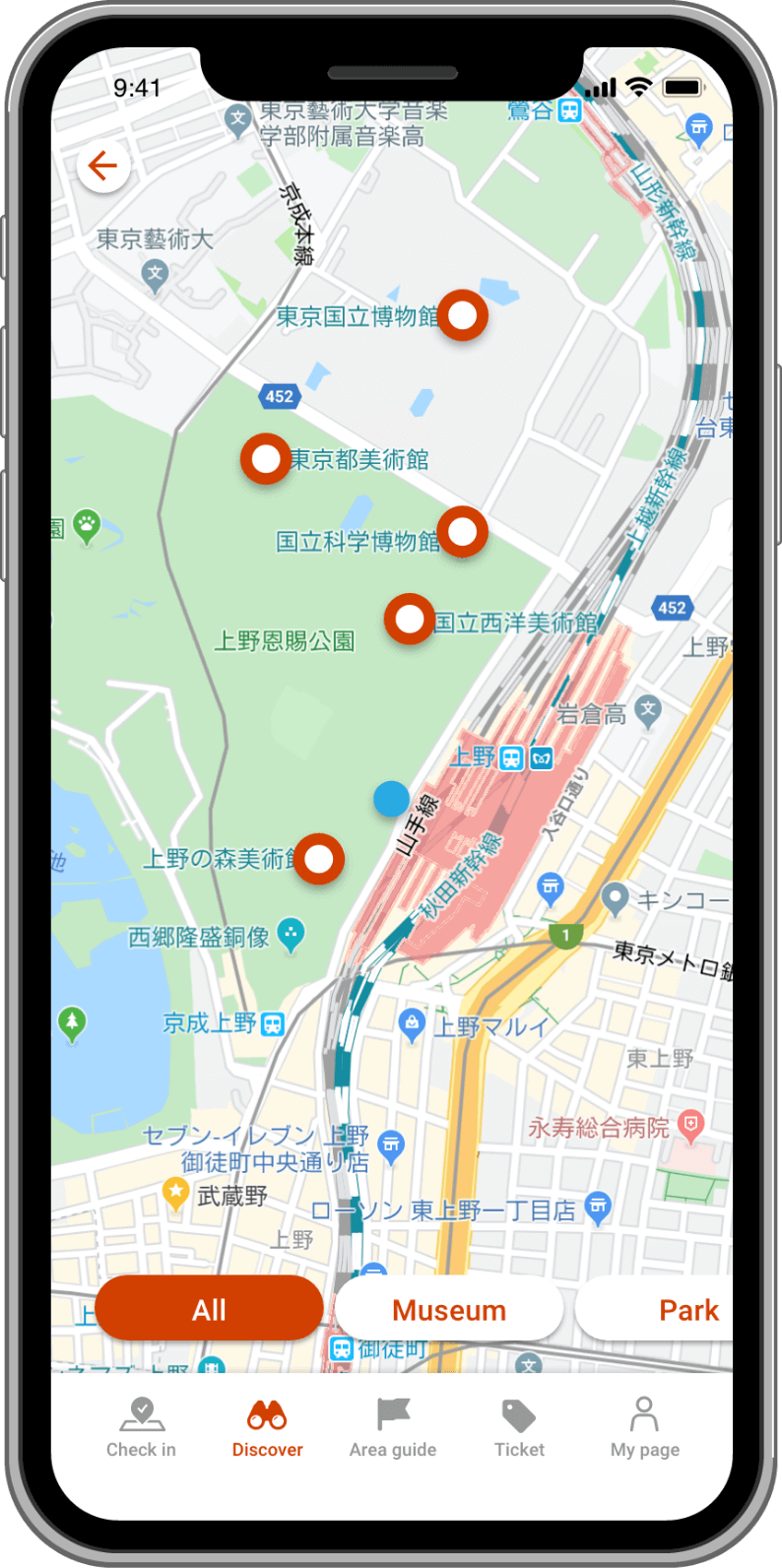
Where to go next? Introduction to cultural facilities near your current location
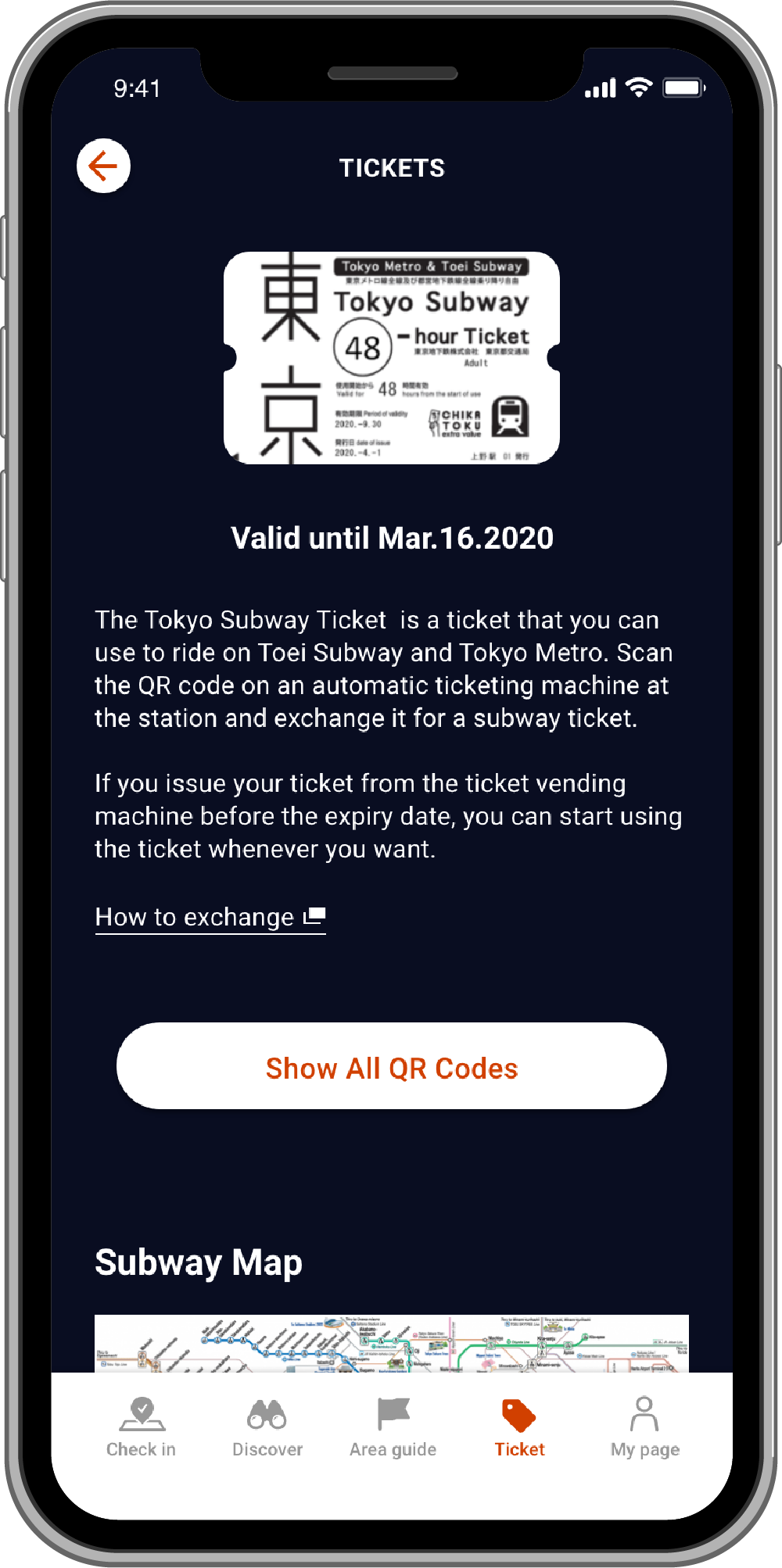
Smooth travel, too! Unlimited rides on 13 Tokyo subway lines
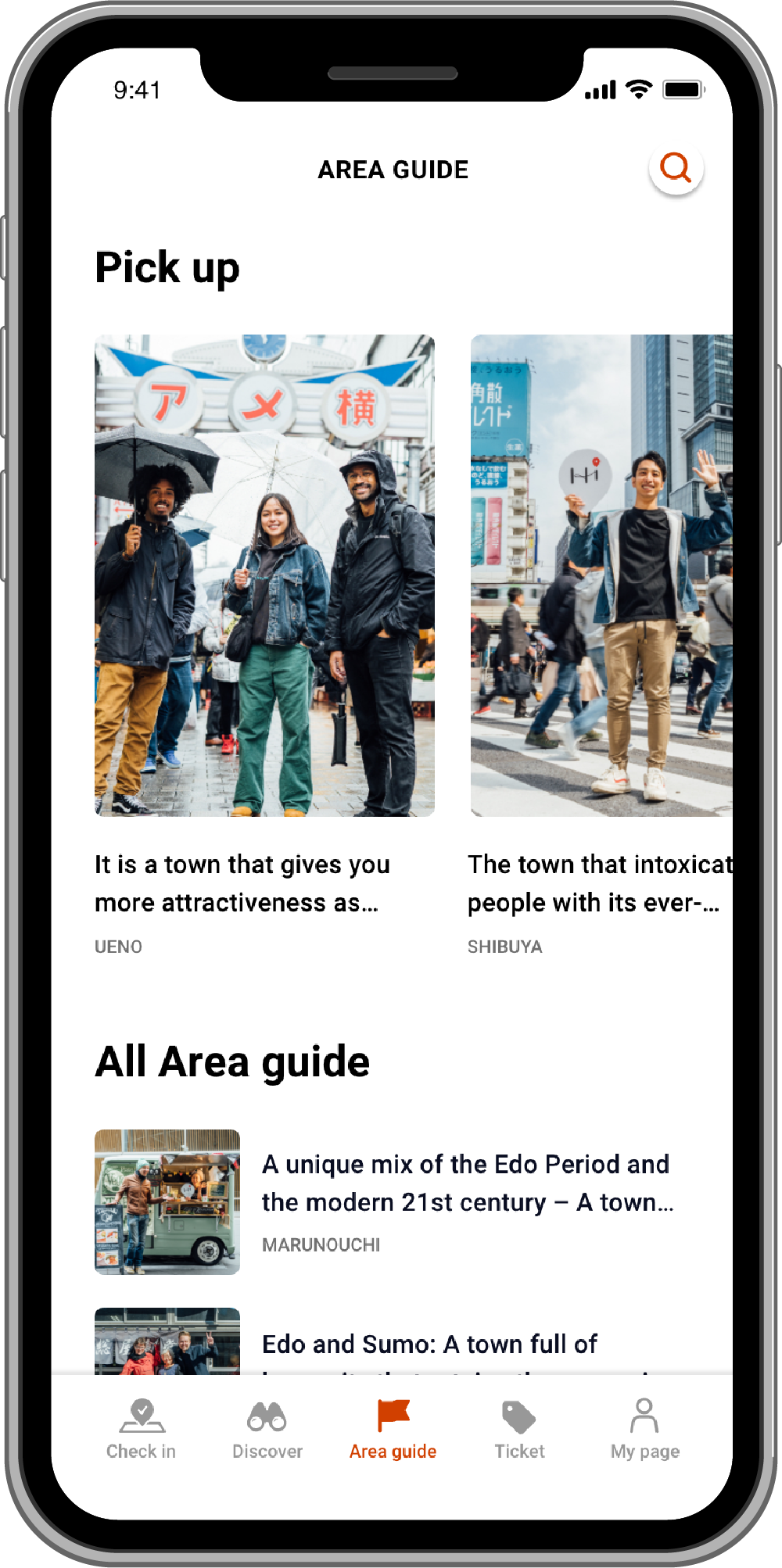
Packed with local info! Shared information about spots where you can experience the city’s culture
May you have a lot of good encounters.
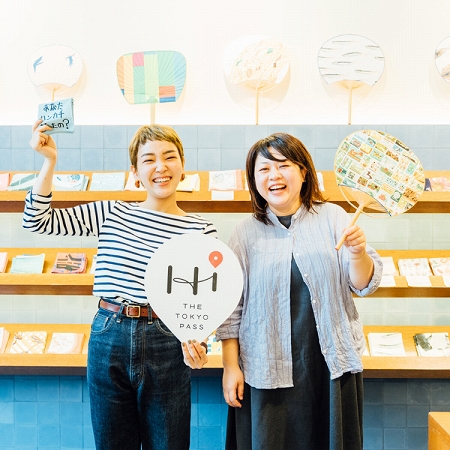
It started with “Hi”.
THE TOKYO PASS will support your cultural experience in Tokyo safely and affordably. We hope you’ll use it as your travel companion!

※"QR Code" is a registered trademark of DENSO WAVE INCORPORATED in Japan and in other countries.

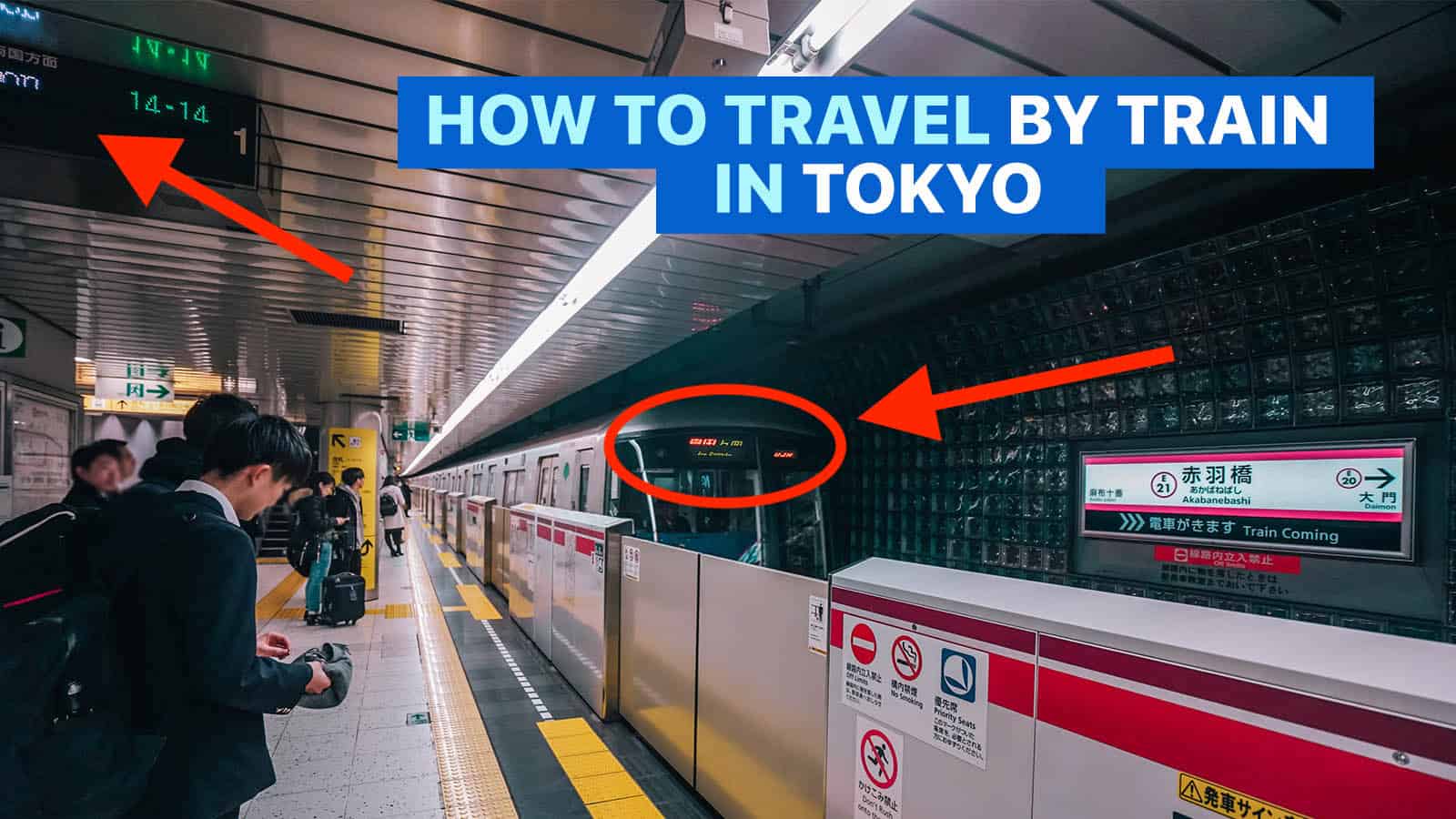
HOW TO GET AROUND TOKYO BY TRAIN: Guide for First Timers

Taxis are expensive, and buses can be confusing for first-timers. In Tokyo, the train is the most efficient mode of transportation. Tokyo has an extensive and expansive railway system. Wherever it is you’re going, there is most likely a train station very close to it.
Tokyo by train can be a bit overwhelming at first, but it’s easy once you get the hang of it. First, bear in mind that the network is used by almost a dozen operators, including those serving the suburbs. However, in this article, let’s focus on the three companies that serve Central Tokyo: JR East , Toei Subway , and Tokyo Metro Subway . Each of them operate multiple lines that get so entangled, it’s amazing how the Japanese make it work.
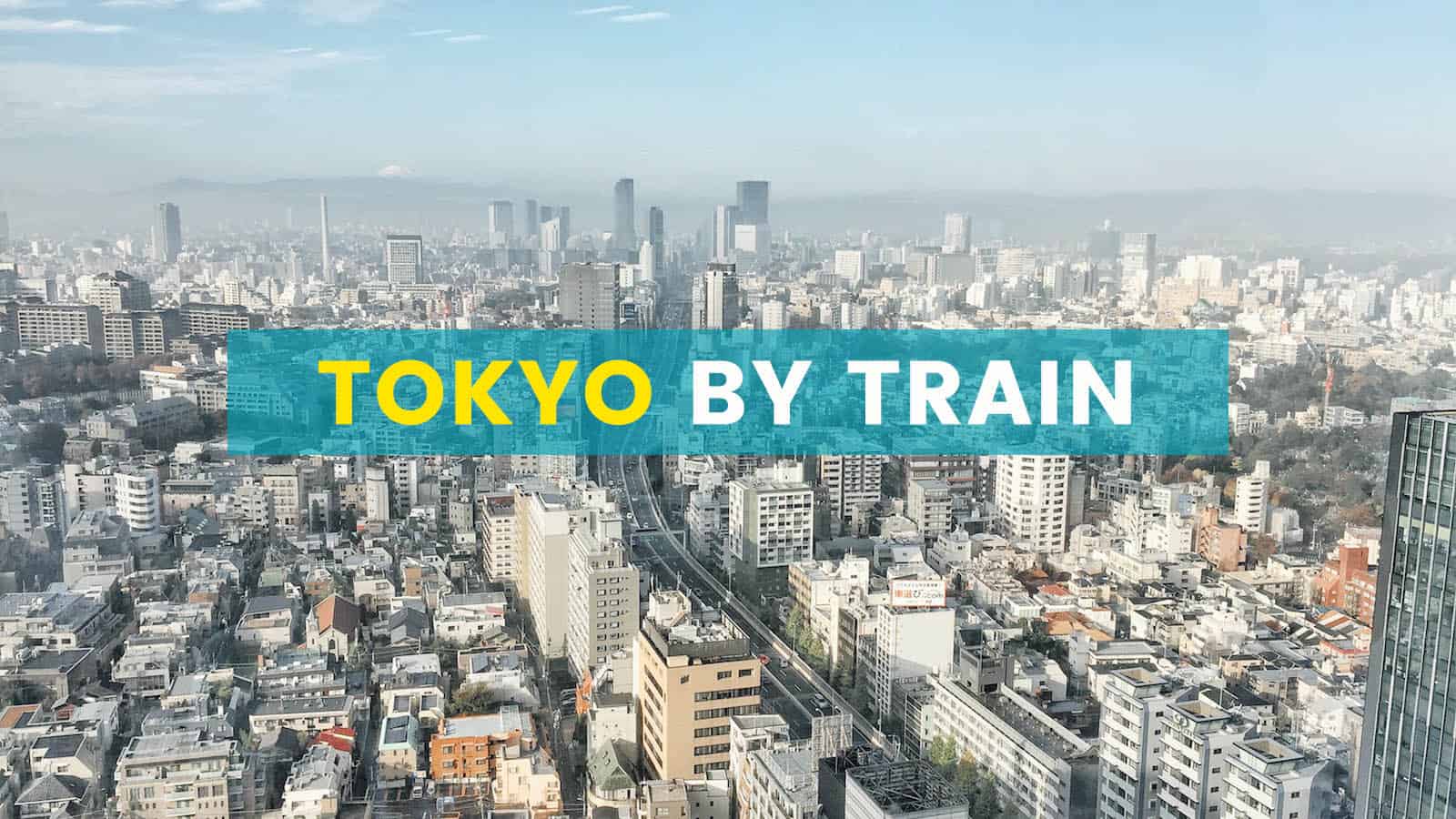
WHAT'S COVERED IN THIS GUIDE?
JR East controls the all-important JR Yamanote Line , a train loop that runs around Tokyo, linking the city’s key areas including Ueno, Shinjuku, Shibuya and Shinagawa. It also marks the boundary of Central Tokyo. The area within the loop is considered Central Tokyo.
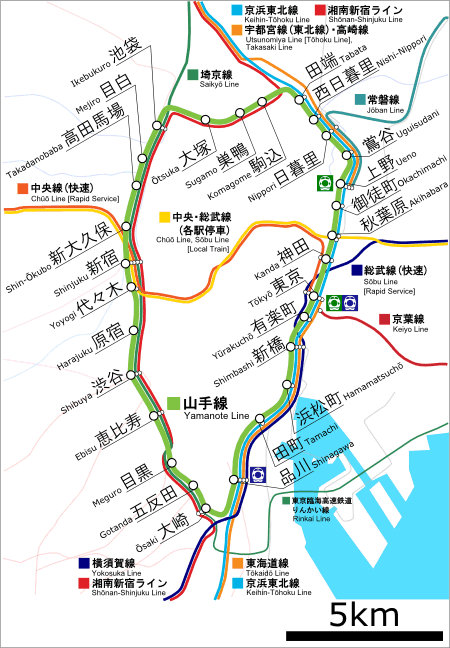
Expectedly, this line is used by a good fraction of the population (which is me saying that it’s often crowded, hehe). Aside from Yamanote, JR also runs other lines including Chuo Main, Chuo-Sobu, and the Shinkansen (bullet train).
Subway Lines
The subway lines are operated by Tokyo Metro and Toei . Although separate companies, these two are in great synergy. Often, you don’t need to exit the gates and buy new tickets even if you switch from Toei to Metro lines. (There are cases when you do, though.) Subway lines are marked with an assigned letter in a color-coded circle. For example, Shinjuku Line’s mark is an S in a leaf green circle. Mita Line’s mark is a the letter I in a blue circle. Remember these marks and the companies’ logos because this is how you’ll find them.
Tokyo Metro Subway Lines
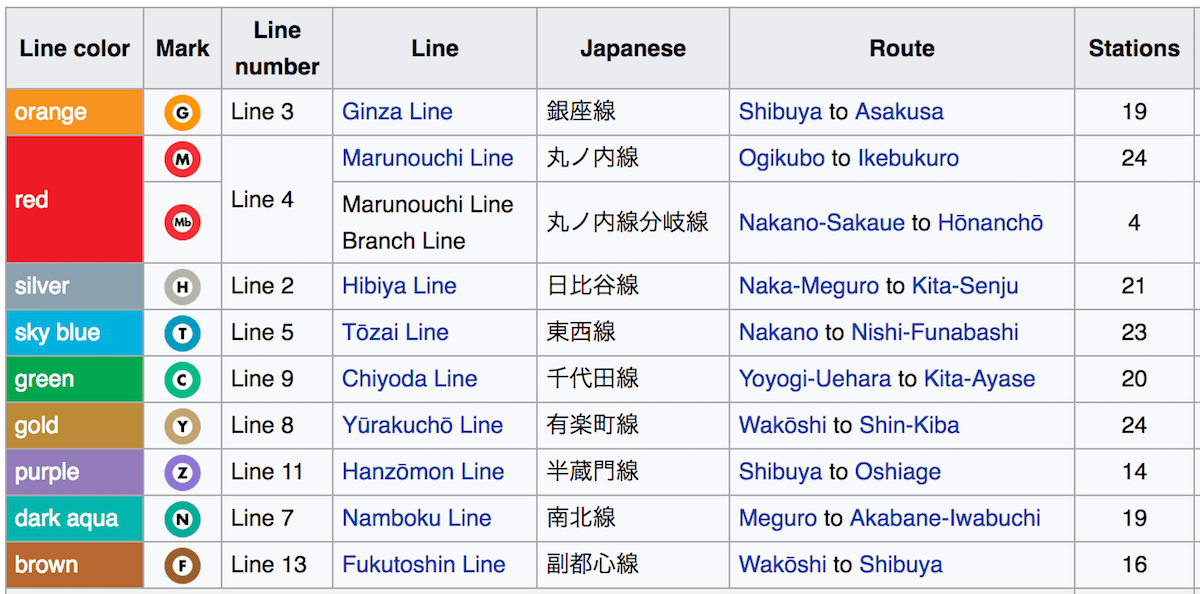

Toei Subway Lines

You might be thinking, “Oh cool. That looks easy.” Wrong. It seems easy to understand now, but if you’re a Tokyo newbie, it’s a lot more difficult in practice. These lines are so entangled, and when they meet in major stations like Shinkuku or Tokyo, things get even more complicated. Even I, who have been to Tokyo four times, and my sister, who has been living in Tokyo for years, sometimes get awfully lost.
Types of Trains
Aside from the lines, you also might need to know the different train types:
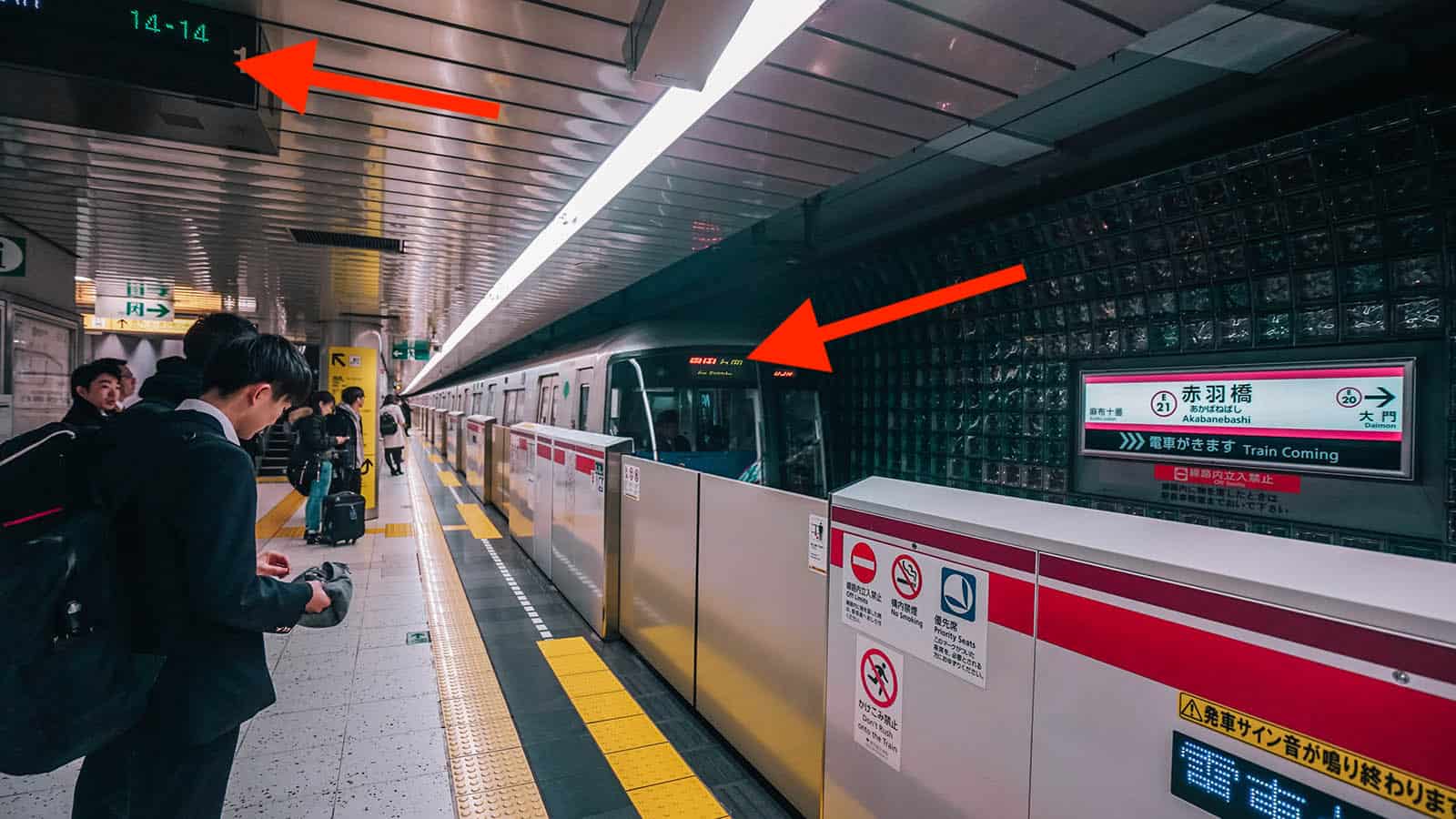
- Local Trains are those that stop at every single station of the line. EVERY. SINGLE. STATION. If your stop is 20+ stations away, it can take a lot of time.
- Rapid Trains are those that skip some stations. Same price as local trains. Same platforms, too.
- Express Trains skip even more stations.
- Limited Express stop only at major stations. Additional fee is usually required.
If it entails waiting only a few minutes on the platform, I would usually just choose a rapid or express train even when the a local train is already approaching. WARNING, though: Board the non-local trains only if you’re sure it will make a stop at your station. You don’t wanna skip your stop. True story. Hahaha.
How to Travel By Train using Single Tickets
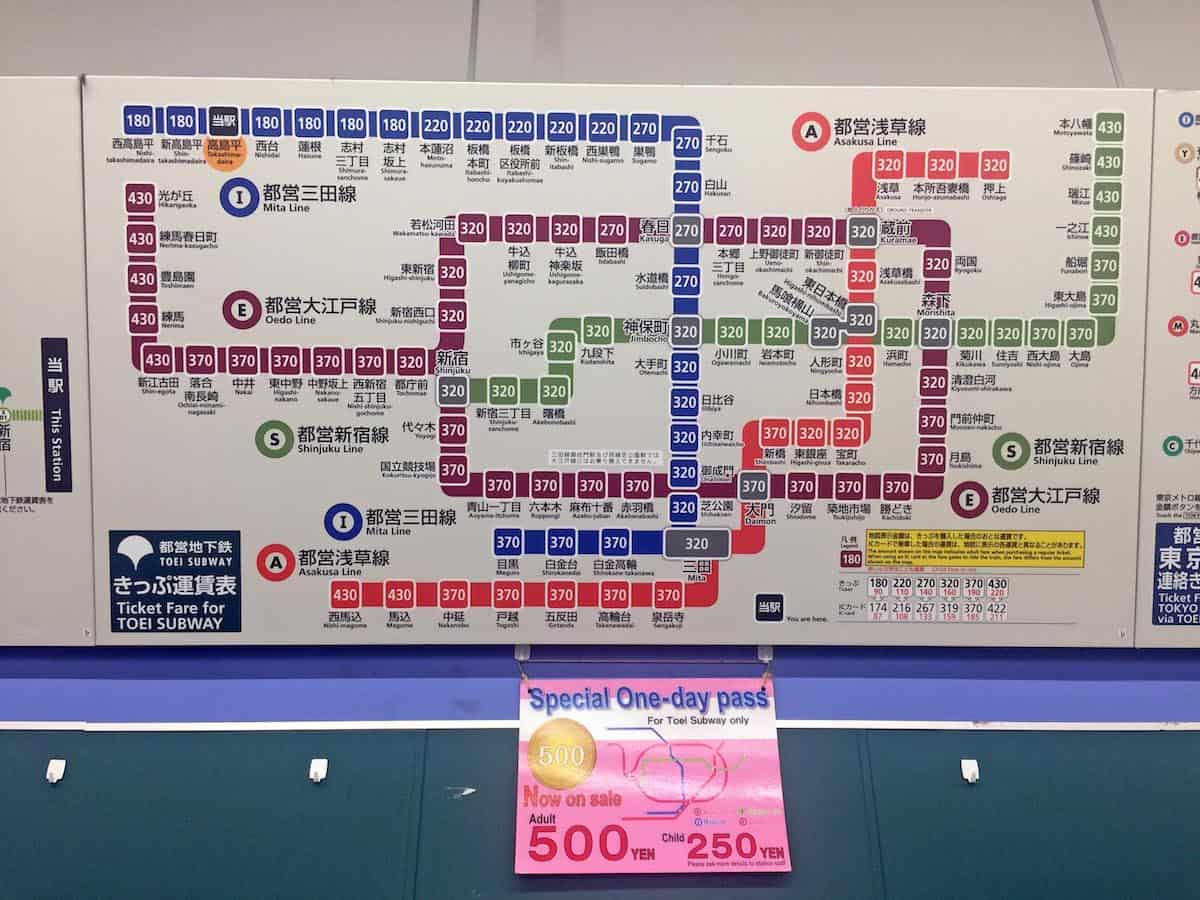
- On your web browser, go to Hyperdia.com/en/ . Enter your origin and the station where you’re going. It will then display possible route options including how much the ride costs and transfers needed to get there. At the train station, you can double check the price. Just look at the route map, usually above the ticket machines. The map displays the price based on distance. Sometimes, the map is in Japanese characters only, which is why Hyperdia is useful.
- Once you know how much you’re gonna pay, approach the ticket machines. By default, these machines display everything in Japanese characters. But there is a button there that reads ENGLISH. Press that button and you will hear a voice saying “All train information will be displayed in English.” (I said it out loud in the right intonation when I typed that. Totoo.)
- Follow the steps onscreen . Usually, you will need to press the button (next to the screen) that displays how many passengers you are and then press the corresponding price on the screen. Yep, you should know how much you should be paying before using these machines, hence the first two steps. It will then ask you to confirm your booking.
- Get the tickets that the machine will release . (If after getting the ticket you realize you made a mistake or you just change your mind, don’t worry. Just use the same ticket. Fare adjustment machines are installed at every station. Make the adjustment at the destination.)
- Feed your ticket to the ticket slots at the gate . It will emerge at the end of the gate. Pick it up again. The ticket is small so try your best not to lose it.
- Go to the right platform . To check if you’re in the right direction, check the list of stations usually displayed on a wall before the platforms. There is also a more detailed timetable in the middle of the platform.
- Wait for the right train . The estimated time of arrival of the next few trains and the train type (Rapid, Local, etc) are displayed on electronic screens above the platform.
That’s it! If you get lost or you encounter any problem, don’t hesitate to approach the staff at the window. Every station has one.
Also, if you’re an adult, don’t even try getting a ticket meant for kids just to get a discount. Children’s tickets make a distinct birdy sound when used at the gates to let the staff know that it’s really being used by kids. Yep, birdy.
How to Buy and Use Suica or Pasmo Card
Prepaid IC Cards are also available. It seldom offers discounts, but the beauty of it is that you don’t need to get a ticket each time you’re using the train. You just need to quickly hover the card over the reader and you’re through.
What’s the difference between Suica and Pasmo? The companies offering it, mainly. Suica is sold by JR while Pasmo by Toei and Tokyo Metro. However, both cards work in any Tokyo Metro, Toei, or JR line. As far as the user experience is concerned, it’s very similar.
To get one, you just need to approach one of the PASMO or SUICA machines at the station. There’s no use for me to enumerate the steps here because it’s so easy. Just choose ENGLISH on the welcome screen and follow the instructions.
These cards can also be used on buses. An increasing number of shops and other establishments are also accepting these cards as mode of payment. You can even use it to buy drinks or snacks from vending machines.
Should You Get One of Those One-Day Train Passes?
A lot of them are available but I find most of them impractical. It only makes sense to use them if you’re making several train journeys in a day or two.
- Tokyo Free Kippu (Tokyo Tour Ticket) allows you unlimited access to any JR, Toei, or Tokyo Metro line within Central Tokyo for one day. It costs ¥1590. It only makes sense if you’ll be riding the train SEVERAL times in a day.
- Tokyo Subway Ticket grants you unlimited access to all subway lines (Toei and Tokyo metro, NOT JR). Cost: ¥800 for 24 hours, ¥1200 for 48 hours, and ¥1500 for 72 hours. Available at Narita and Haneda airport. This is a good deal only if most of the attractions you’re gonna visit are close to a subway station.
There are many other variations, but the two above are the most common.
If you decide to purchase a Tokyo Subway Ticket, we have a sample 2-day itinerary here so you can maximize the card. READ: THE BEST OF TOKYO IN 2 DAYS!
Should You Buy a JR Pass?
If you’re staying in TOKYO only, NO, you don’t need a JR Pass.
It only makes sense to get a JR Pass if you’re on a multi-city journey around Japan. For example, if you will be visiting three cities in 7 days, it could be a great deal.
Before you purchase one, know that the JR Pass can only be used on JR line rides. You can’t use it on Toei or Tokyo Metro rides. So if you will be staying in Tokyo the entire trip, a JR Pass isn’t really worth it.
If your itinerary involves taking long-distance trains often and you’re staying for 7 days, you can save money by getting a Train Pass.
Klook offers the cheapest JR Passes available.
Top Budget Hotels in Tokyo
Top budget and capsule hotels based on Agoda customer reviews.

- MyCUBE by MYSTAYS Asakusa Kuramae. Check Rates & Availability! ✅
- Capsule Hotel Anshin Oyado Tokyo Akihabara. Check Rates & Availability! ✅
- GLANSIT AKIHABARA COMFORT CAPUSULE HOTEL. Check Rates & Availability! ✅
- Capsule Hotel Anshin Oyado Premier Tokyo Shinjuku Station. Check Rates & Availability! ✅
- KEIKYU EX INN Akihabara -Tokyo Akihabara. Check Rates & Availability! ✅
- Dormy Inn Premium Tokyo Kodenmacho – Nihonbashi. Check Rates & Availability! ✅
- Hotel Wing International Select Asakusa Komagata. Check Rates & Availability! ✅
Search for more: Tokyo Hotels
2️⃣0️⃣1️⃣6️⃣ • 1️⃣2️⃣ • 2️⃣8️⃣
More Tips on YouTube ⬇️⬇️⬇️
Is this post helpful to you?

Related Posts:
- Lake Kawaguchi: Under the Spell of Mt. Fuji, Japan
- The Emperor’s New Year Greeting: Imperial Palace, Tokyo, Japan
- JAPAN MULTI-CITY TOUR: How to Plan a Budget Trip
- Tokyo: Top 10 Budget Hotels Under $70
- Tokyo: Top 10 Recommended Hostels
- How to Get to SAPPORO from TOKYO or OSAKA
- TOKYO DISNEYLAND & DISNEYSEA: Guide for First-Timers
- HOW TO GET TO DISNEYLAND from Tokyo Downtown or Airport

- Recent Posts
- 2024 Resorts World One HONG KONG CRUISE Guide for First Timers - 13 April 2024
- FLIGHT RESERVATION for VISA • How to Get Dummy Ticket for Schengen, Canada, China and Other Visa Applications - 22 March 2024
- 2024 Cebu Pacific Promos & PISO SALE with List of Covered Destinations - 4 March 2024
Hi! Puede po ba kayong gumawa ng Travel guide sa Japan kung SAN nag taping sila Empoy ung movie na “Kita Kita”. Please
Hi Lomi! That’s in Sapporo in Hokkaido. We have travel guides for Sapporo and for a multi-city tour in Hokkaido:
SAPPORO ONLY: https://www.thepoortraveler.net/2017/02/sapporo-travel-guide-hokkaido-japan/
HOKKAIDO MULTI-CITY: https://www.thepoortraveler.net/2018/02/hokkaido-tour-itinerary/
Hello po. Between suica and pasmo card, which one is better?
Personnaly, anong ginamit niyo sa Japan IC cards or JR pass? Thanks
Hi Vinz, similar lang yung SUICA and PASMO, so okay lang either.
Between IC cards and JR Pass, they’re completely different. JR Pass is for long-distance multi-city travels. IC Card is a stored-value card. If you’re staying in just one or two cities, you don’t need a JR Pass. We explained that here: https://www.thepoortraveler.net/2017/03/is-jr-pass-worth-it/
hi po ask ko lang po, pwede po ba gamitin ang ICOCA sa Tokyo? mas makakatipid po ba ang ICOCA + 72-hour unlimited tokyo pass? 4 days po kasi ako sa OSAKA and Kyoto and another 4 days naman sa Tokyo. sa city lang naman po ako magiikpt ikot at hindi na sa malalayong puntahan na mahal ang gastos para may reason ako para bumalik :-)
Hi Cha, yes, ICOCA works in Tokyo.
Whether or not makakatipid ka sa 72-hour subway ticket depends sa itinerary mo. If yung mga pupuntahan mo is near a subway station, then gora. But remember JR is not covered by the subway ticket so if mas JR ang stations, di sya worth it.
Featured On

We heard you!
Your comment is now queued for moderation! We’ll try to get back to you soonest. While waiting, follow us on these channels.
Subscribe on Youtube! Follow us on Instagram!

Tokyo: Getting there and around
How to get to tokyo.
By air - Tokyo has two airports: Narita Airport handles the majority of international flights and only a small number of domestic flights. It is located 60 kilometers outside of central Tokyo. The more centrally located Haneda Airport handles a smaller number of international flights and the majority of domestic flights.
By shinkansen - Most shinkansen lines lead to Tokyo. The trip from Osaka / Kyoto takes about three hours. There are also direct trains to/from Kyushu , Kanazawa , Niigata and various destinations in the Tohoku Region and Hokkaido .
Above fees and schedules are subject to change. Be sure to check current yen exchange rates .
Getting around
Tokyo is covered by a dense network of train , subway and bus lines, which are operated by about a dozen different companies. The train lines operated by JR East and the subway lines are most convenient for moving around central Tokyo.
Tokyo's most prominent train line is the JR Yamanote Line , a loop line which connects Tokyo's multiple city centers. The city's 13 subway lines are operated by two companies and run largely inside the Yamanote circle and the areas around Ginza and the area east of the loop line. Most of the many suburban train lines commence at one of the six major stations of the Yamanote Line (Tokyo, Ueno, Ikebukuro, Shinjuku, Shibuya and Shinagawa).
Major JR train lines in central Tokyo
The map shows Tokyo's major railway stations and the five JR lines that are most relevant to people who travel within central Tokyo.
- Yamanote Line Circle line that connects all major city centers.
- Keihin-Tohoku Line Runs parallel to the Yamanote Line on the eastern half of the circle.
- Chuo/Sobu Line (Local) Runs across the Yamanote circle (local slow service).
- Chuo Line (Rapid) Runs across the Yamanote circle (rapid service). Connects Tokyo Station with Shinjuku Station .
- Saikyo Line Runs parallel to the Yamanote Line on the western half of the circle. From Osaki Station, some trains continue running along the Rinkai Line in direction of Odaiba .
- Shinkansen Tokaido Shinkansen trains stop at Tokyo and Shinagawa , while bullet trains to the north stop at Tokyo and Ueno.
Tokyo's subway network is operated by two entities: Toei with four lines, and Tokyo Metro with nine lines. Together, they densely cover central Tokyo, especially the area inside the Yamanote circle and the areas around Ginza and the area east of the loop line.
Note, that at their terminal stations, the trains of some subway lines continue to operate on the tracks of different companies on suburban train lines. For example, the Chiyoda Subway Line is directly connected with the suburban Odakyu Line at Yoyogi-Uehara, and trains on the Fukutoshin Subway Line continue to run on the tracks of the Tokyu Toyoko Line at Shibuya.
Other railway companies
Besides JR East and the two subway companies, most other railway companies connect Tokyo with the metropolis' outer regions and surrounding prefectures . Their lines typically start at one of the stations of the JR Yamanote Line . Many of the private railway companies also operate department stores usually at their train lines' major stations.
- Tokyu Railway Serving southwestern Tokyo and Kanagawa .
- Tobu Railway Serving Saitama and Tochigi , including Nikko .
- Seibu Railway Serving the Tokyo Tama Region and Saitama .
- Keio Railway Serving the Tokyo Tama Region.
- Odakyu Railway Serving Kanagawa , including Hakone .
- Keisei Railway Serving Chiba , including Narita Airport .
- Keikyu Railway Serving Kanagawa , including Haneda Airport .
- Tsukuba Express Connecting Akihabara with Tsukuba City, Ibaraki .
Passes and Tickets
A whole variety of day passes is available for the Tokyo area, however, most of them are overpriced and/or not very practical because they do not cover all of Tokyo's train and subway lines. Consequently, single tickets or prepaid cards usually come cheaper, especially if you plan your city sightseeing in a geographically wise way.
Prepaid IC cards are generally the recommended way to get around Tokyo. Prepaid cards don't give you any discounts over single tickets, but they provide convenience as you can ride virtually any train or bus in Greater Tokyo (and most other major cities in Japan) with just a simple swipe over a card reader. They can also be used to make quick purchases at a large number of shops, restaurants and tourist spots across Japan.
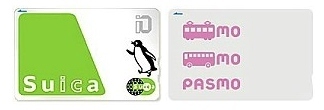
Two types of IC cards are available for purchase in Tokyo: Suica cards at JR stations and Pasmo cards at non-JR stations. Furthermore, eight IC cards from other major cities of Japan can also be used on the trains and buses of Tokyo, including Icoca, Kitaca, Toica, Manaca, Pitapa, Sugoca, Nimoca and Hayakaken.
Only on days when you use trains or subways a lot, can it make sense to consider one of Tokyo's day passes:
- Tokyo Free Kippu (aka Tokyo Tour Ticket) (1600 yen) Unlimited use of all subway lines (Toei and Tokyo Metro ) and JR trains in the central Tokyo area on one calendar day (i.e. from the first to the last train of the day). It is also valid on buses and streetcars operated by Toei. The pass is overpriced and will unlikely provide any savings over regular tickets or prepaid cards.
- Tokyo Subway Ticket (24 hours: 800 yen, 48 hours: 1200 yen, 72 hours: 1500 yen) Unlimited use of all subway lines (Toei and Tokyo Metro ). Not valid on JR trains. The pass is sold at Narita Airport , Haneda Airport , ticket offices at some major subway stations, and selected Bic Camera and Yamada Denki electronic stores in central Tokyo to foreign tourists only (passport required). Furthermore, it is sold to both foreign tourists and residents of Japan through selected travel agencies and convenience stores outside of the Kanto Region . It can also be purchased online through Klook .
- Toei and Tokyo Metro One-Day Economy Pass (900 yen) Unlimited use of all subway lines (Toei and Tokyo Metro ) on one calendar day. The pass pays off only if you use the subways a lot. The pass is not valid on JR trains. Unlike the lower priced Tokyo Subway Ticket (see above), this pass can be purchased at the subway stations in central Tokyo.
- Tokyo Metro 24-Hour Ticket (600 yen) Unlimited use of the nine Tokyo Metro subway lines, but not the four Toei subway lines and JR trains. The ticket is available through ticket machines at Tokyo Metro stations.
- Toei One-Day Pass (Toei Marugoto Kippu) (700 yen) Unlimited use of the four Toei subway lines, buses and streetcars on one calendar day. It is not valid on the nine Tokyo Metro subway lines and JR trains. The pass is available at ticket machines and ticket counters at Toei stations.
- Tokunai Pass (760 yen) Unlimited use of JR trains in the central Tokyo area on one calendar day. The pass is available at the purple vending machines and ticket counters at JR stations.
The Japan Rail Pass and JR Tokyo Wide Pass are valid only on JR trains and the Tokyo Monorail. They cannot be used on subways or any other non-JR trains.
Questions? Ask in our forum .
Links and Resources
Tokyo metro, toei subway, odakyu electric railway, keio electric railway, keisei electric railway, keikyu electric railway, tokyu railway, tobu railway, seibu railway, tsukuba express, toei subways, odakyu railway, keio railway, keikyu railway, keisei railway, hotels around tokyo.

Experiences around Tokyo


Tokyo's train and subway system is clean and efficient and one can get to most points in the city this way.

Printable subway metro map of Tokyo (PDF)!

©All Content on this site © TOKYO POCKET GUIDE
- Tokyo Cheapo (繁體中文)
Which Japan Rail Pass To Choose
A Japan Rail Pass (JR Pass) gives you unlimited travel on bullet trains (Shinkansen) and regular Japan Rail trains. It can save you lots of time — and some money. There are a few different options, and which one you ultimately choose depends on how long you’re traveling and the level of comfort you want.
There are also various regional rail passes . So if your travel plan are limited to a particular region you should also consider those. Whatever your travel plans are, we’ve got you covered with everything you know to pick the right pass for your trip.
Pro tip: You can compare the JR Pass with one-way Shinkansen tickets on Klook or Rakuten Travel Experiences to see which will be cheaper for your trip.-->
- What is the Japan Rail Pass?
How much does the JR Pass cost?
- Standard class vs. Green Car class
Deciding between a 7-, 14-, or 21-day pass
- The JR Pass vs. regional rail passes
- Do I need a JR Pass?
- Summary: What to remember when choosing your JR Pass
- Where to buy the Japan Rail Pass
- Using your Japan Rail Pass
- Alternatives to the Japan Rail Pass: Using other transport
Quick summary : If you want to keep it simple, order the Japan Rail (JR) Pass online before your trip.
Is the JR Pass worth it? If you’re traveling to four or five major cities within seven days, it’s likely you’ll be saving money. For example, from Tokyo travel to Kyoto, Osaka, Hiroshima, Kanazawa and back.
Usually the easiest and cheapest options for ordering the JR Pass (both with free shipping) are Headout and KKday , but it’s also worth price checking on Klook .
The Japan Rail Pass: Everything you need to know

The Japan Rail Pass is the mother of all travel passes, allowing you unlimited rides on all JR trains from Kagoshima at the bottom end of Kyūshū right up to the northern tip of Hokkaidō . You can ride everything from the super-cool Shinkansen (that’s the bullet train) to local, rapid, and limited express JR trains; select JR buses; and even a ferry.
It’s the (nearly) unlimited access to the Shinkansen that gives the pass its true value. Japan’s Shinkansen network is comprehensive and growing! Read up on everything Shinkansen here .
Note: JR Pass holders are now able to ride on all types of Shinkansen, including the Nozomi and Mizuho services.
What does the JR Pass cover?
- All JR trains save for the fastest Shinkansen services on the Tōkaidō, Sanyō, and Kyūshū lines.
- Local JR buses routes, but NOT intercity JR bus routes. Local JR bus routes often connect a major JR train station with area attractions, like hot spring resorts and trailheads. However, not all local buses are run by JR. Even with a JR Pass, you might find yourself having to pay extra to ride a local bus to reach your final destination.
- The JR Miyajima Ferry between the pier at JR Miyajimaguchi Station and the pier on Miyajima , a popular attraction.
- Select non-JR lines, including: the Tokyo Monorail (from Haneda Airport); the Aomori Railway between Aomori and Hachinohe in Tōhoku (but only if disembarking at Aomori, Noheji, or Hachinohe stations); the IR Ishikawa Railway between Kanazawa and Tsubata (provided you do not disembark mid-way); the Ainokaze Toyama Railway between Toyama and Takaoka (provided you do not disembark mid-way).
What is NOT covered by the JR Pass?
All non-JR lines save for the few mentioned above. This becomes a little tricky when there are sections of private railway interrupting stretches of JR tracks. For example, getting from Tokyo to Mount Fuji by train requires travel along a length of tracks owned by Fujikyū Railway; as a result, pass holders must pay a small surcharge to cover passage through this section of tracks.
Nikkō and Shimoda (at the southern tip of the Izu Peninsula) are two other popular destinations where special rules and/or additional costs apply. See our guide to getting from Tokyo to Nikkō for advice on how to do this journey on a JR Pass without paying extra.
Who can purchase a JR Pass?
The All Japan Rail Pass can only be used by travelers entering Japan on a foreign passport with a “temporary visitor” visa (aka a tourist visa). Japanese nationals as well as foreign residents on any other kind of visa cannot buy one.
Not eligible? A handful of regional rail passes are available to long-term foreign residents of Japan (meaning you have a foreign passport but some other kind of visa, like a work visa). Another options is to get a Japan Bus Pass — these can be used by anyone with a foreign passport!
The cost of the pass depends on the duration of the pass, the class, and how you buy it. It is cheapest to buy the pass overseas; the prices quoted below are the prices for purchasing overseas.
*Prices were accurate as of October 1, 2023.
Important: The duration of each JR pass is the number of days from when it is first activated — including that day. The passes are valid for travel on consecutive days only. There is no option to split up travel — so once you activate your JR Pass, the clock starts. Choose carefully, because you won’t be able to change the pass — either the duration or the class — after you arrive.
Is there a JR Pass for children?
Yes, children aged 6–11 are eligible for a half-priced rail pass. Children must be no older than 11 on the day the pass is purchased.
JR Pass prices for children 6–11:
Children five and under ride for free on Japanese trains; however, they are not guaranteed a seat. Only pass holders can reserve seats, so if you want to guarantee a seat for your child/children under six, they will need their own (children’s) pass. Otherwise, they can sit in any unclaimed seats. If there aren’t any left, the child must ride on your lap.
For this reason, only one child under six per adult is allowed to ride for free on the Shinkansen. To ride for free, children should be under six on the day of travel (in case passports are checked).
Is a Green Car pass worth it?
JR’s “Green Car” is equivalent to business class. All Shinkansen lines and some commuter lines have Green Cars. Some newer model Shinkansen also have “Gran Class” cars, which would be equivalent to first class. There is no Gran Class JR Pass.
An upgrade gives you more space: Ordinary Shinkansen cars seat three on one side of the aisle and two on the other, whereas Green Cars seat two and two across the aisle. The seats and armrests are a little bigger, and each seat has its own power point for charging. There’s also more legroom, more space for reclining, and a foot rest.
For reasons not related to actual JR policy, the Green Car is usually quieter than the regular cars.
The big downside is that there are no unreserved seat Green Cars, which means you must have a reserved seat for every leg of your journey. This does not cost extra, but it means that you can’t just show up at the station and jump on whatever train pulls into the platform next.
Also most trains may have only one — or at most up to three — Green Cars, so there are just less seats in general to reserve. (Though of course reservations for ordinary cars tend to fill up faster anyway).
Services that MAY have no Green Cars include: Most Hikari and Kodama services on the Sanyō Shinkansen (Shin-Osaka to Hakata); some Sakura and Tsubame services on the Kyūshū Shinkansen (Hakata to Kagoshima); and all Kamome services on the Nishi Kyūshū Shinkansen.
Pro tip : Many of the bullet trains have power outlets available in front of or next to your seat, so that you can charge your phone and use your laptop; it just depends on whether the line you’re riding runs newer or older series trains. You can also connect to free Wi-Fi on an increasing number of Shinkansen, though connection can by spotty (think: frequent tunnels). Read more about getting Wi-Fi in Japan .
We envy anyone who even gets to consider a 21-day pass! Most travelers find themselves deciding between the 7-day and the 14-day pass. What you ultimately choose obviously depends on where you plan to go and how long you plan to be in Japan.
Cost breakdown per day by pass
The easiest way to stretch a 7-day JR Pass on a longer trip is to spend a few days at either the beginning or the end of your trip in Tokyo (and pay out of pocket for travel one-way to the airport). Then you could have a week to explore Kansai destinations like Kyoto and Osaka and travel onwards to Hiroshima and Miyajima via the castle town, Himeji . This is a classic first trip itinerary, returning to Tokyo on the last day of the pass.
On the other hand, with a couple more days and a 14-day pass, you could return to Tokyo via destinations such as Kanazawa , Nagano , or Takayama .
Keep in mind the difference in cost between a 7-day pass and a 14-day pass is ¥ 30,000 (or ¥ 40,000 , for a Green Car pass). So don’t get a 14-day pass just to cover transport to and/or from Tokyo and Narita Airport. But do get a 14-day pass if you plan to be traveling some distance from Tokyo for more than a week.
Pro tip: For ideas on where to go and what to do with your JR Pass, check out this 7-day DIY rail itinerary that takes you from Tokyo to Niigata and then down to Kansai. Also this Northern Explorer option that sees you going deep into the heart of Tōhoku and Hokkaidō.
Can I stack JR passes?
Yes, this is possible. However the cost of two 7-day passes is the same as a 21-day pass ( ¥ 100,000 ).
You could also consider stacking regional rail passes , but this risks making things overly complicated. (With regional rail passes, you will need to disembark at the border of one region, cross to the next region, and then begin traveling on the next pass).
The countrywide JR Pass vs. regional rail passes
The classic Japan Rail Pass covers the whole JR rail network, offering maximum flexibility — you can literally travel from Tokyo to Hokkaidō to Kagoshima and back to Tokyo if you please. (A journey that, if you bought individual tickets for, would cost more than ¥ 100,000 .)
However, there are many other rail passes that cover travel within specific regions; for example, there are rail passes just for travel around Hokkaidō , Shikoku , or Kyūshū that are less expensive than the countrywide JR Pass. These passes don’t, however, cover the cost of getting to and from Tokyo. So you’d have to work out if, after factoring in that cost, you’d still be saving money.
The only regional rail passes that covers travel from Tokyo are those offered by JR East. If your travel plans are limited to Tokyo and anywhere north and east of the capital, namely Tōhoku and Hokkaidō — and not destinations to the west, like Kyoto — then a regional rail pass from JR East might be a better choice that saves you money.
Is the JR Pass still worth it?
If you are planning a couple of inter-city return trips from Tokyo to places like Kyoto and Sendai , or one really long trip across the country, then the main JR Pass is worth getting.
The regular price (reserved seat during non-peak travel) for return travel between Tokyo and Kyoto is ¥ 28,340 . Meanwhile, the regular round-trip price on the Shinkansen between Tokyo and Hiroshima alone is ¥ 38,880 . So taking two trips like that would make the JR Pass worthwhile, even after October 1. For just a single trip, however, it’s probably not worth it.
If you plan to spend all of your trip in and around Tokyo (or Kansai , for that matter), then you almost certainly don’t need a national JR Pass. You might want a regional JR Pass or a single-use Shinkansen ticket.
You could also look at the prices of Japan’s low-cost airlines (more on non-rail travel later).
Are the views from the Shinkansen worth it?
While the Shinkansen may provide a better view of the country than you would get from the middle aisle of an airplane, it’s worth noting that large parts of the bullet train network are either underground or have sound barriers beside the tracks — so you might spend most of the journey dozing. You’ll still get plenty of glimpses of everyday Japan, though, and it’s possible to see Mount Fuji as you hurtle between Tokyo and Kyoto or Osaka (they’ll announce it).
Summary: What you need to remember when choosing a JR Pass
If you plan on taking the Shinkansen a lot, it’s a good idea to buy a rail pass. As we mentioned, the regular price for a return ticket on the Shinkansen between Tokyo and Hiroshima is around ¥ 38,000 . Meanwhile, return journeys from Tokyo to Shin-Hakodate-Hokuto (Hakodate, in Hokkaidō) and Hakata (Fukuoka, in Kyūshū) cost the same: ¥ 46,860 , nearly as much as a regular 7-day pass (which costs ¥ 50,000 from October 1).
However, if you’re only making one long-distance trip, a one-way Shinkansen ticket may work out to be cheaper. Use our Shinkansen fare calculator to help you figure out the best option for your travel plans.
Here’s a quick recap of the main tips:
- DO buy a JR Pass if you’re planning a fair bit of inter-city travel. It’s best to plan your travels first, and then pick a pass accordingly.
- DON’T buy a Japan Rail Pass if you’re just traveling around the Tokyo/ Yokohama area. It’s cheaper to buy individual tickets or use a charged Pasmo/Suica card . And for exploring the greater Tokyo area, a Tokyo Wide Pass is likely better value.
- Similarly, if you’re exploring Osaka, Kyoto, and surrounds, a regional pass like the Kansai Area Pass is probably a better deal.
- To avoid any extra, unexpected travel costs, be sure to confirm the exact lines and services you can use, and read all the fine print.
Where can I buy the JR Pass?
There are currently two ways to buy a pass, both online:
- Online, from an authorized overseas travel partner (best price)
- Online through the dedicated JR Pass website
we recommend buying your pass from an overseas agent before coming to Japan. Up until 2017, the Japan Rail Pass could not be purchased in Japan -- you had to buy it either online or through an authorized travel agent before arriving. JR Passes are currently available for purchase in Japan, at select locations, until the end of March 2024.-->

Using your JR Pass
Whichever rail pass you choose, the process is the same: If you purchased it online, you will have to go in person to a JR Travel Service Center or select JR ticket counter to pick up and activate the actual pass. (Obviously if you’re buying it after arriving in Japan, you’re already there in person).
Here’s the full list of JR stations where you can activate your JR Pass . Note there’s sometimes a long queue for picking up rail passes at the the airport and Tokyo Station locations, other stations in Tokyo might have much less of a queue like Shibuya, Shinagawa, Ikebukuro, and Ueno.
After activation, to use your JR Pass, you simply insert the ticket into an automated ticket barrier at any JR station.
Activating your JR Pass
When you purchase a rail pass overseas online, you will receive an exchange order, which you need to take, together with your passport, in person, to a JR Travel Service Center or select JR ticket counter (see the link above). There, you will be given the actual pass. You will be asked when you would like to activate it. This can be the same day, so you can start your travels immediately, or a later date.
Exchange orders must be activated within three months (90 days) of purchase.
Pro tip: We recommend not exchanging your JR Pass at the airport, as the lines can get ridiculous.
Making seat reservations with a JR Pass
You can make seat reservations for Shinkansen and limited express trains at the same time that you activate your pass. Whether or not to make reservations is up to you; it’s free to do so.
Before Japan became a super-popular international destination, it was pretty common not to make reservations in advance. It was no problem to just show up and hop on the next train — grabbing a jiyūseki (unreserved seat). But nowadays, and definitely during peak travel seasons, the risk of winding up seatless is greater (you can almost always get on the train, you just might have to stand).
Peak travel season includes: Cherry blossom season (late March through early April); Golden Week (late April through early May); summer holidays (mid-July through August); and over the New Year (from late December through early January).
If you purchase the pass directly through the dedicated pass website, you unlock the ability to reserve seats up to one month prior to your first day of planned travel online. But then you lose the discount for purchasing overseas.
Once you have the physical pass, you can use the QR code on the ticket to reserve seats using the reserved seat ticket machines at certain stations.
Making seat reservations has also become more important since certain Shinkansen lines introduced new luggage restrictions in 2020.
Japan Rail Pass FAQs
Do i need to buy a japan rail pass before arriving in japan.
No, not anymore. It is possible this might change in the future, though. Still, considering they are cheaper when bought outside Japan, it makes sense purchase your JR Pass before arriving in Japan .
What happens if my JR Pass gets lost or stolen?
Don’t let this happen! It will not be replaced! If this does happen, head to the nearest JR station lost and found. Since passes can only be used by the person whose name is on the pass, someone might find it and turn it in.
Does the Japan Rail Pass cover all the trains in Japan?
No, the Japan Rail Pass only covers travel on Japan Rail (JR) train lines and select private lines. Fortunately, the JR network is the most comprehensive in the country, covering all of Japan save for Okinawa.
There are very few places other lines travel that JR Group trains don’t. One big exception is municipal transit: City-operated subway, tram, and bus networks won’t be covered by the pass. The pass is intended for travel between cities, not within them.
Does the Japan Rail Pass cover buses?
The JR Pass covers travel on local and regional JR buses. It does not cover inter-city JR buses or private bus operators.
Does the Japan Rail Pass cover ferries?
The only ferry covered by the Japan Rail Pass is the ferry to Miyajima .
Does the Japan Rail Pass cover the subway?
No. There are no JR subway lines, and the pass does not cover any private or municipal subway lines.
Can I use the Japan Rail Pass to get from Narita Airport to Tokyo?
You can use the Japan Rail Pass (or any JR East pass ) to ride JR’s fancy limited express airport shuttle, the Narita Express (N’EX) . You will need to secure a seat reservation, which you can do when you activate your pass. However, once you start using your pass the clock starts. So, don’t activate your pass just for the ride from the airport if you are going to be spending the next couple of days in Tokyo!
Can I use the Japan Rail Pass to get from Haneda Airport?
The Japan Rail Pass covers travel on the Tokyo Monorail from Haneda Airport to Hamamatsuchō, where you can transfer to the JR Yamanote line. But again, only use your pass to get from the airport if you are heading right to the nearest Shinkansen station; otherwise, it’s just not worth it.
Can I use the Japan Rail Pass to get from Kansai Airport?
The Japan Rail Pass covers travel on the JR limited express Haruka train from Kansai International Airport (KIX) to either Osaka or Kyoto. This is the fastest, most convenient, and (without the pass) most expensive public transport option from KIX. You will need to secure a seat reservation, which you can do when you activate your pass. But again, only use your pass for airport travel if you plan to start inter-city travel right away.
Can I use the Japan Rail Pass to get around Tokyo?
You can use the Japan Rail Pass to ride JR trains in Tokyo, including the JR Yamanote and JR Chūō-Sōbu lines. You cannot use the pass to ride any subway, bus, or private operator lines, with the exception of the Tokyo Monorail. But more importantly, you won’t get your money’s worth using the pass to get around Tokyo; save it for inter-city travel!
Can I use the Japan Rail Pass to get around Kyoto?
There is only one JR bus line in Kyoto. Kyoto municipal subway and bus lines — the main way to get around the city — are not covered by the JR Pass.
Alternatives to the Japan Rail Pass: Using non-rail transport
Seeing as the Japanese railway system is so on point, we’re sure you’ll be using its services at some time or another during your stay. However, that doesn’t mean you don’t have other travel options.
For road travel, we recommend reading about the Japan Bus Pass . take to the seas with a Japan Ferry Pass .-->
And for route information between Tokyo and major destinations, including details on air and bus travel, check out our transportation article series, which includes:
- Tokyo to Kyoto
- Tokyo to Osaka
- Tokyo to Sapporo
- Tokyo to Hiroshima
- Tokyo to Okinawa
Also read: Our guide to the Tōhoku Shinkansen and guide to the Jōetsu Shinkansen .
While we do our best to ensure it’s correct, information is subject to change. Post first published in September 2015. This guide was last updated in September 2023.
- Bullet train
- Rail Passes
- Sustainability
Get our Tokyo Cheapo Hacks direct to your inbox

A Guide to ALL Pokemon Centers in Tokyo, Japan

Asakusa: A Guide to Tokyo's Traditional Center

Top Things to do in Odaiba: Gundam, Museums & Tokyo Bay

Renting a Pocket Wifi Router in Japan: The Best Options

Tokyo Sumo Guide: When and Where to Experience Sumo Wrestling

Best Budget Sushi Restaurants in Tokyo

Tokyo Disneyland: Everything to Know Before Visiting

6 Spectacular Spring Flower Festivals Around Tokyo
Move over, cherry blossoms! These other blooms will take your breath away well into late spring.

English-Speaking Hospitals in Tokyo — And How To Visit Them
Absolutely everything you need to know about seeing a doctor in Japan.

Yozakura: 8 Best Nighttime Cherry Blossom Illuminations in Tokyo
Light-ups have been extended, since the blossoms were so late this year.

New Video: Tokyo's Best Airport — Flying into Narita vs. Haneda
Which one should you use when flying to Tokyo?

Updated Forecast: 2024 Tokyo Cherry Blossom Dates
They've been teasing us — but looks like they're about to bloom, at last.

The Hokuriku Arch Pass: Taking the Slow Route Between Tokyo and Osaka
Meander along Japan's "golden route" — exploring Nagano, Kanazawa and more.

Spring Escapes: Top 7 Day Trips from Tokyo
Must-see cherry blossom, moss phlox, and wisteria locations — all easily accessible from Tokyo.

Ashi Angels: Hakone for Evangelion Fans
Explore the real Tokyo-3.
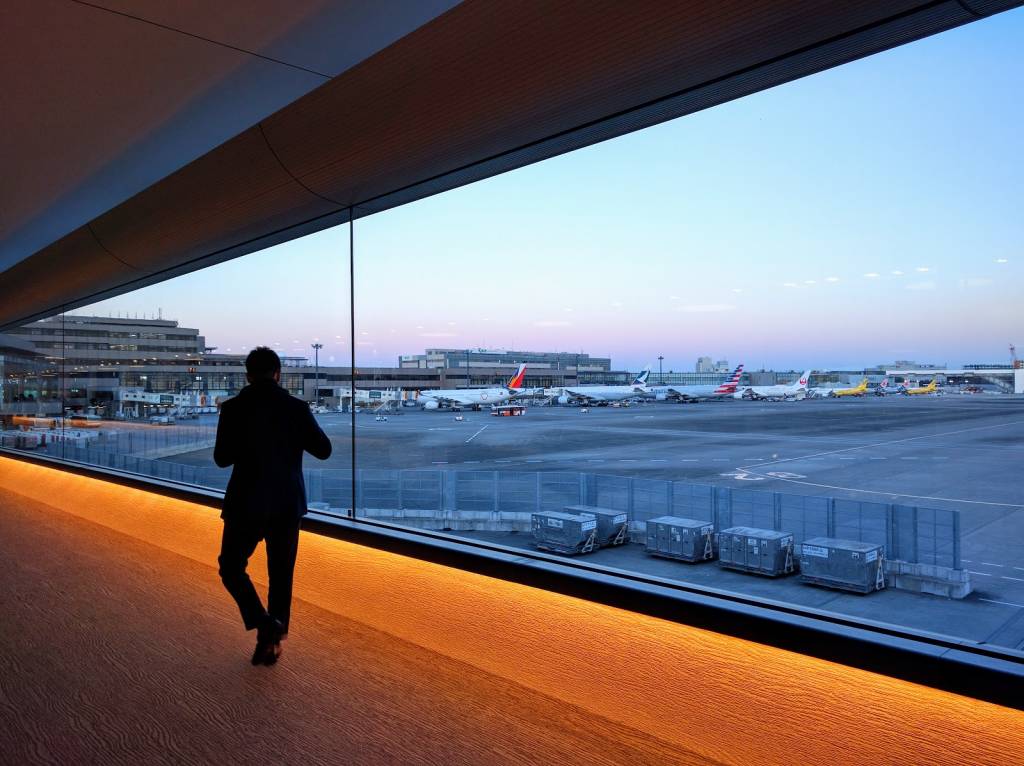
Finding the Best Transport From Narita Airport to Tokyo
How to get from the plane to your accommodation.

New Video: Top Japanese Phrases You Need Before Traveling to Japan

5 Stunning Spring Bus Tours From Tokyo
Take a ride to experience the best of the season.

Top 25 Easy Day Trips From Tokyo
Add a few of these to the wander list.

Close without accepting

IMAGES
VIDEO
COMMENTS
Tokyo Subway Ticket. Tickets available for domestic visitors living outside Tokyo or Kanagawa, Saitama, Chiba, Ibaraki, Tochigi, Gunma and Yamanashi prefectures, and overseas visitors. ... The Greater Tokyo Pass is a special ticket that allows 3 days of unrestricted travel on all train and tram lines that are members of the Greater Tokyo Pass ...
These tickets can be used on all Tokyo Metro and Toei Subway lines, and are valid within 24 hours, 48 hours or 72 hours of the time of purchase. Price. Tokyo Subway 24-hour Ticket - Adult: 800 yen, Child: 400 yen. Tokyo Subway 48-hour Ticket - Adult: 1,200 yen, Child: 600 yen. Tokyo Subway 72-hour Ticket - Adult: 1,500 yen, Child: 750 yen.
Tokyo Free Kippu 24-hour Ticket. US$10.57 *. Estimate based on price JPY 1,600. (Rates updated daily) Unlimited access to the Tokyo Metro, Toei Subway, Toei Streetcar (Toden), most Toei buses, the Nippori-Toneri Liner, and all JR lines within the Tokyo metropolitan area. Toei Bus One-day Pass. US$3.30 *.
When it comes to exploring Tokyo, there are a variety of economical train passes and tickets, some available only to overseas passport holders. The best ticket for you depends on the lines you intend to travel on during your stay in Tokyo. For example, if your hotel is close to a JR train station, you would most likely take JR lines to travel around the city, such as on the JR Yamanote Line ...
JR Tokyo Wide Pass. How much: ¥15,000 (children ¥7,500) What it includes: Three consecutive days of unlimited rides on shinkansen and limited express trains in the Kanto region. You can even hop ...
Travel around Tokyo with Tokyo Subway Ticket. Japan Pop Culture Tour +3; Plan Details. Japan History Experience +5; Plan Details. ... No, not every train. But it does let you use all the subway lines operated by Tokyo Metro and Toei Subway, (around 280 stations, located mainly in the 23 wards of Tokyo), so it lets you visit almost all the ...
Tokyo Metro will commence a service through which QR codes can be used to issue "Tokyo Subway Tickets" at ticket vending machines for travelers! Tokyo Metro's official website. You can view convenient information such as subway map, fares, discount tickets, passes, popular attractions along Tokyo Metro lines, etc. for getting around Tokyo.
One of the easiest ways to travel by train through Tokyo is by purchasing single-use tickets for each trip, to take you from A to B. Typically, Tokyo Metro ticket prices range between 180 and 330 yen ($1.26 - $2.30), while Toei fare goes between 180 and 430 yen ($1.26 - $3).
In Tokyo, as of January 2024, you can get the Tokyo Subway Ticket which allows for 24 hours of unlimited travel along the Tokyo Metro and Toei Subway lines for only 800 yen—with 48-hour and 72-hour tickets available at 1,200 yen and 1,500 yen respectively—giving you the freedom to zip around the city hassle-free.
THE TOKYO PASS allows you to make payments and enter attractions with your smartphone. Having admission slots for THE TOKYO PASS per hour, you can enjoy safe and affordable cultural experiences to avoid unnecessary contact with others and congestion. An entry pass for unlimited admission! Enjoy over 50 popular cultural facilities to the fullest.
Guide to Japanese Train Tickets. Below is a list of the various railway tickets available in Japan: Regular tickets. Regular tickets simply get you from A to B. Our page about regular train tickets provides an introduction to the various fares and fees, such as the base fare and limited express fee, and the rules for using tickets.
The Tokyo Subway Pass is unlimited travel on the Tokyo Metro and Toei Subway over a set period of time e.g. 72 hours. It's an unlimited subway pass for travels on all Tokyo Metro and Toei Subway Lines. With access to 13 different routes and over 250 metro stops that cover most of the city's metropolitan area, it's the perfect ticket for ...
Tokyo Free Kippu (Tokyo Tour Ticket) allows you unlimited access to any JR, Toei, or Tokyo Metro line within Central Tokyo for one day. It costs ¥1590. It only makes sense if you'll be riding the train SEVERAL times in a day. Tokyo Subway Ticket grants you unlimited access to all subway lines (Toei and Tokyo metro, NOT JR). Cost: ¥800 for ...
Tokyo Free Kippu (aka Tokyo Tour Ticket) (1600 yen) Unlimited use of all subway lines (Toei and Tokyo Metro ) and JR trains in the central Tokyo area on one calendar day (i.e. from the first to the last train of the day).
Tokyo Metro also sells a one-day unlimited pass for 600 yen, which you can buy from the ticket machines at Tokyo Metro stations. However, it limits you to the Metro lines and may not be worth the ...
Tokyo's train and subway system is clean and efficient and one can get to most points in the city this way. • If unsure of the ticket price just get the lowest priced ticket then show the ticket at your destination and pay the difference. • If traveling a lot get a Suica or Passmo card from a ticket machine. These can be loaded up with yen ...
For example: A single ticket from Tokyo to Kyoto costs approximately US$88.00 *. without a seat reservation (more about that below). Round-trip, that comes to US$176.01 *. Meanwhile, a 7-day Japan Rail Pass costs US$330.35 *. You'll need to make a least one more long-distance trip before you start to see savings.
Tokyo Metro almost covers the entire area of Tokyo's 23 wards with 9 lines. This includes convenient sightseeing lines such as the Marunouchi Line or the Yūrakuchō Line that go around the Imperial Palace, as well as the Hanzōmon Line that takes you to shitamachi (old downtown) areas in the east. Tokyo Metro also offers the very convenient "Tokyo Metro 24-hour Ticket" for 600 yen, as ...
Nozomi. The Nozomi is the fastest service on the Tōkaidō Shinkansen, reaching speeds of up to 300 km per hour. It only stops at major stations between Tokyo and Shin-Osaka, and makes the full journey in just 2 hours and 20 minutes. Nozomi trains have both reserved and non-reserved seating, except during holiday periods in Japan like Golden Week and New Year, when the whole train is reserved ...
The easiest way to get around Tokyo is to buy a pre-paid ticket-it will save you money and time as you won't need to purchase individual tickets every time you want to jump on a train. There are a few options: a JR Pass, Tokyo Subway Pass, or a Suica IC Card . 1. Tokyo Subway Pass.
As we mentioned, the regular price for a return ticket on the Shinkansen between Tokyo and Hiroshima is around ¥ 38,000. Meanwhile, return journeys from Tokyo to Shin-Hakodate-Hokuto (Hakodate, in Hokkaidō) and Hakata (Fukuoka, in Kyūshū) cost the same: ¥ 46,860, nearly as much as a regular 7-day pass (which costs ¥ 50,000 from October 1).
Tickets can be conveniently purchased online, at an Odakyu Sightseeing Service Center, or via Odakyu Line ticket vending machines at Shinjuku Station. ... including the Shinkansen bullet train from Tokyo to Odawara. ... You can easily book a private car charter online for a day tour from Tokyo to Hakone, with convenient door-to-door pick-up and ...